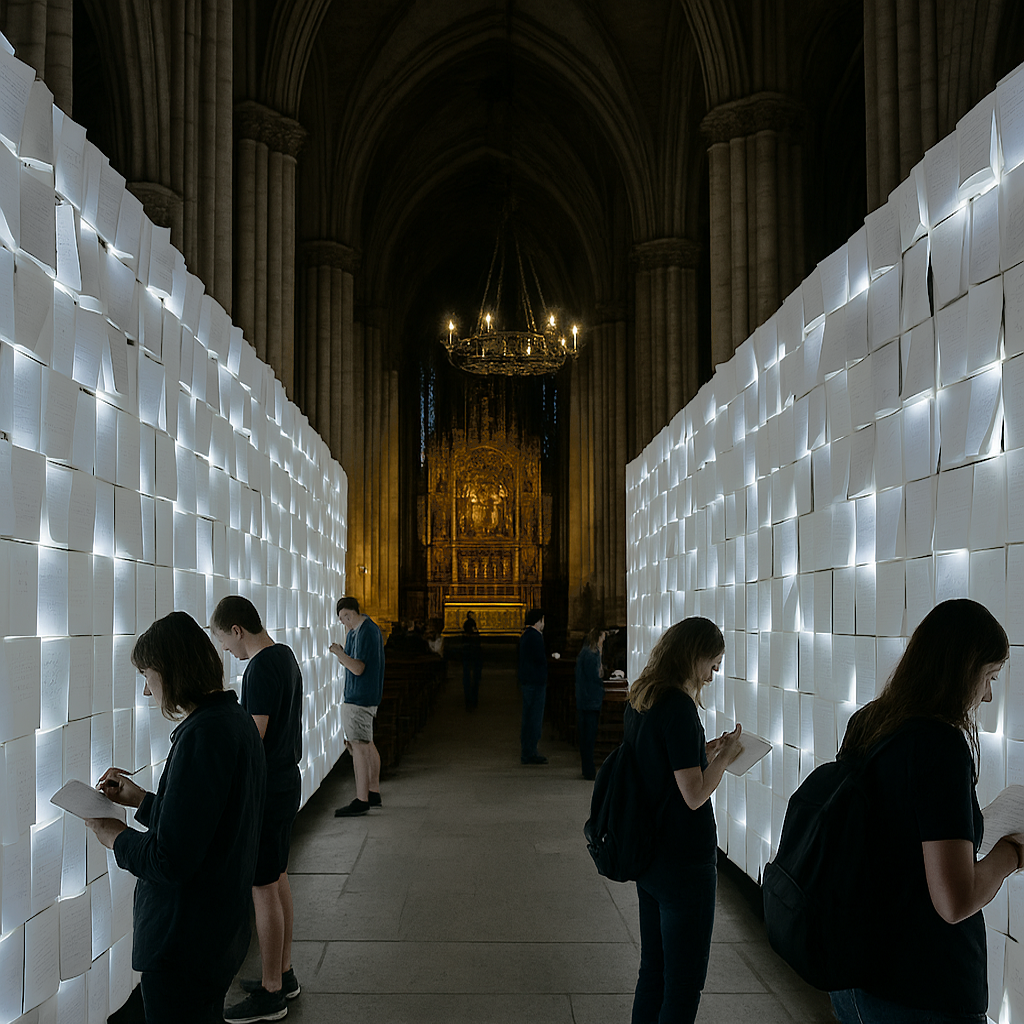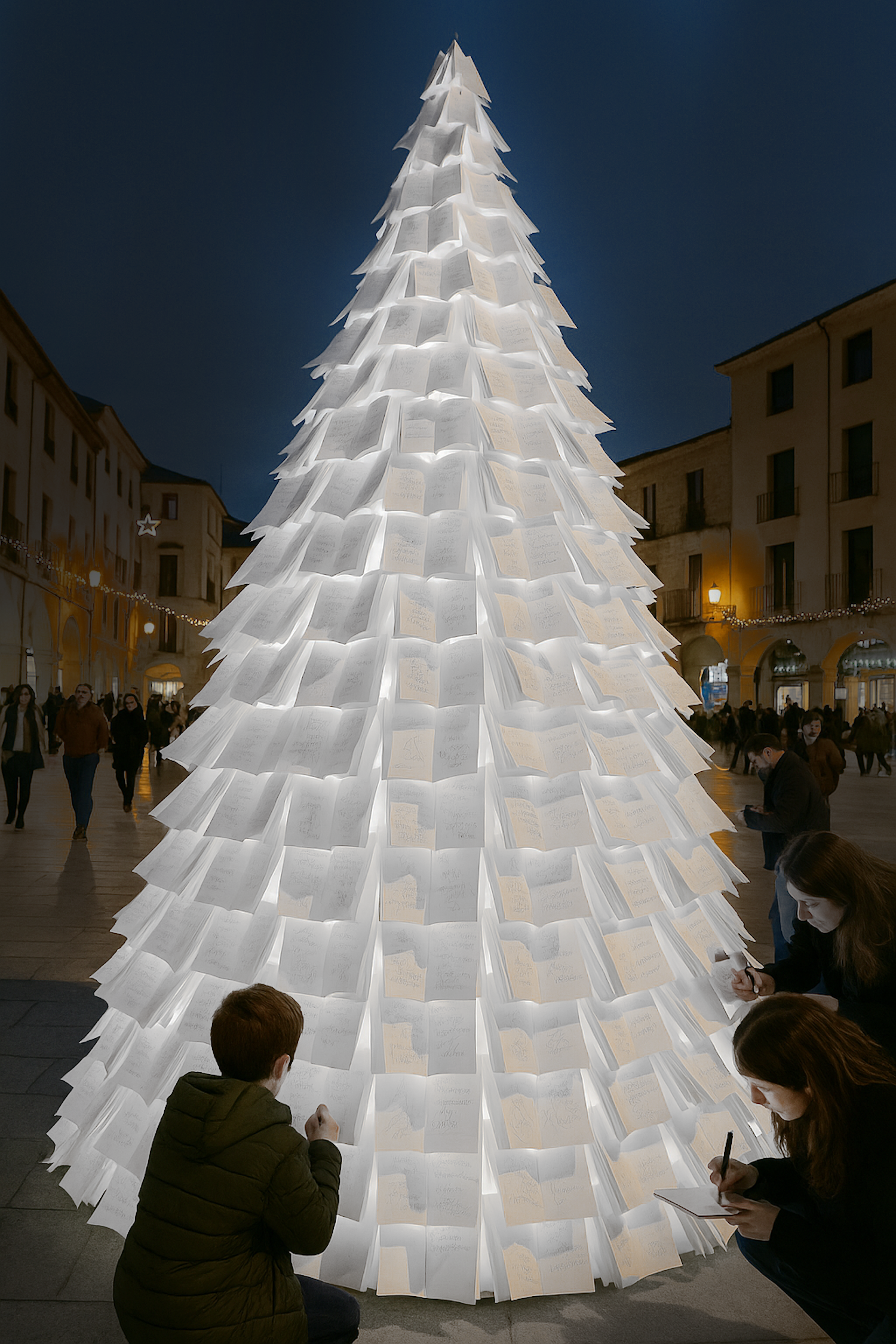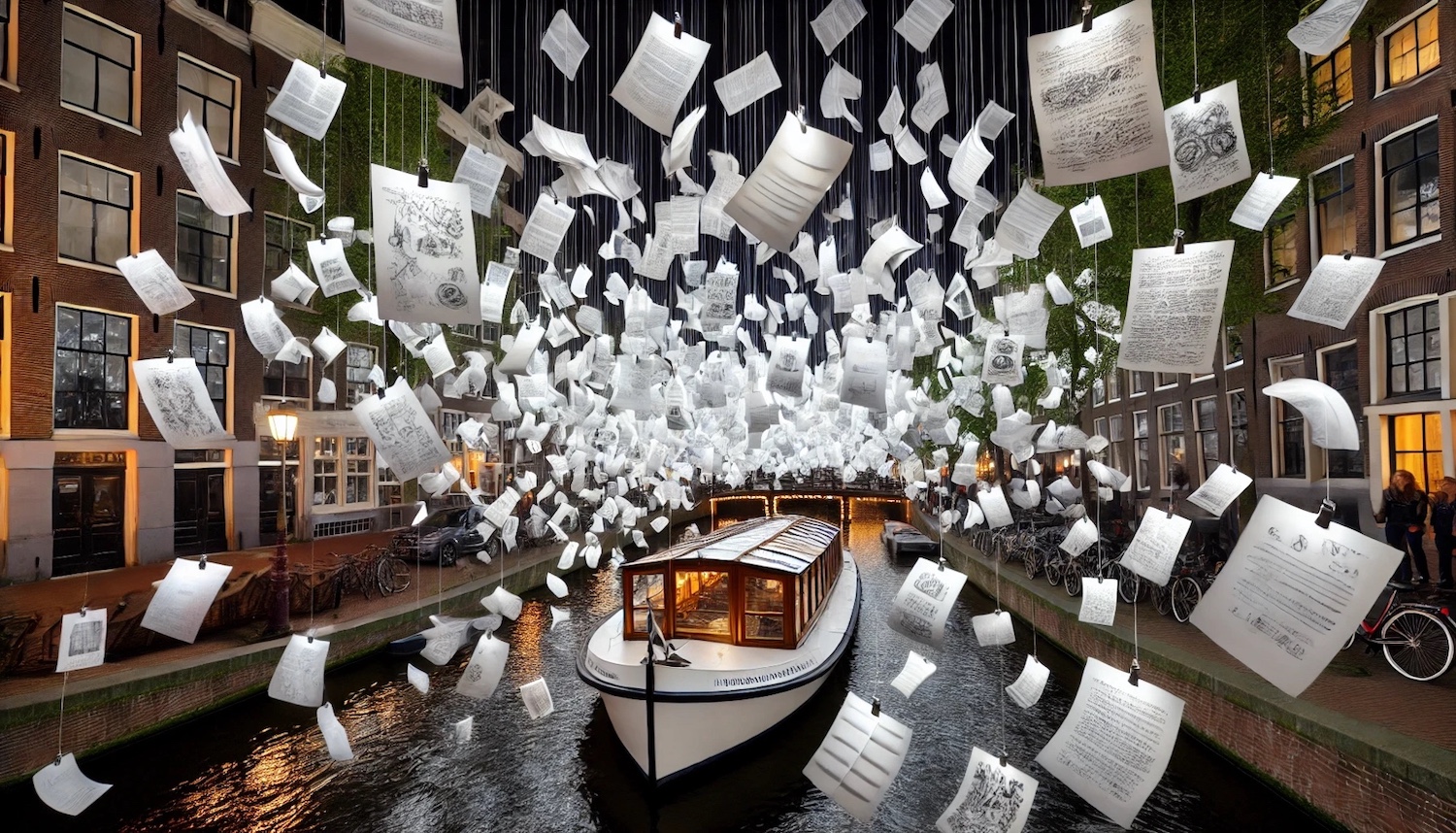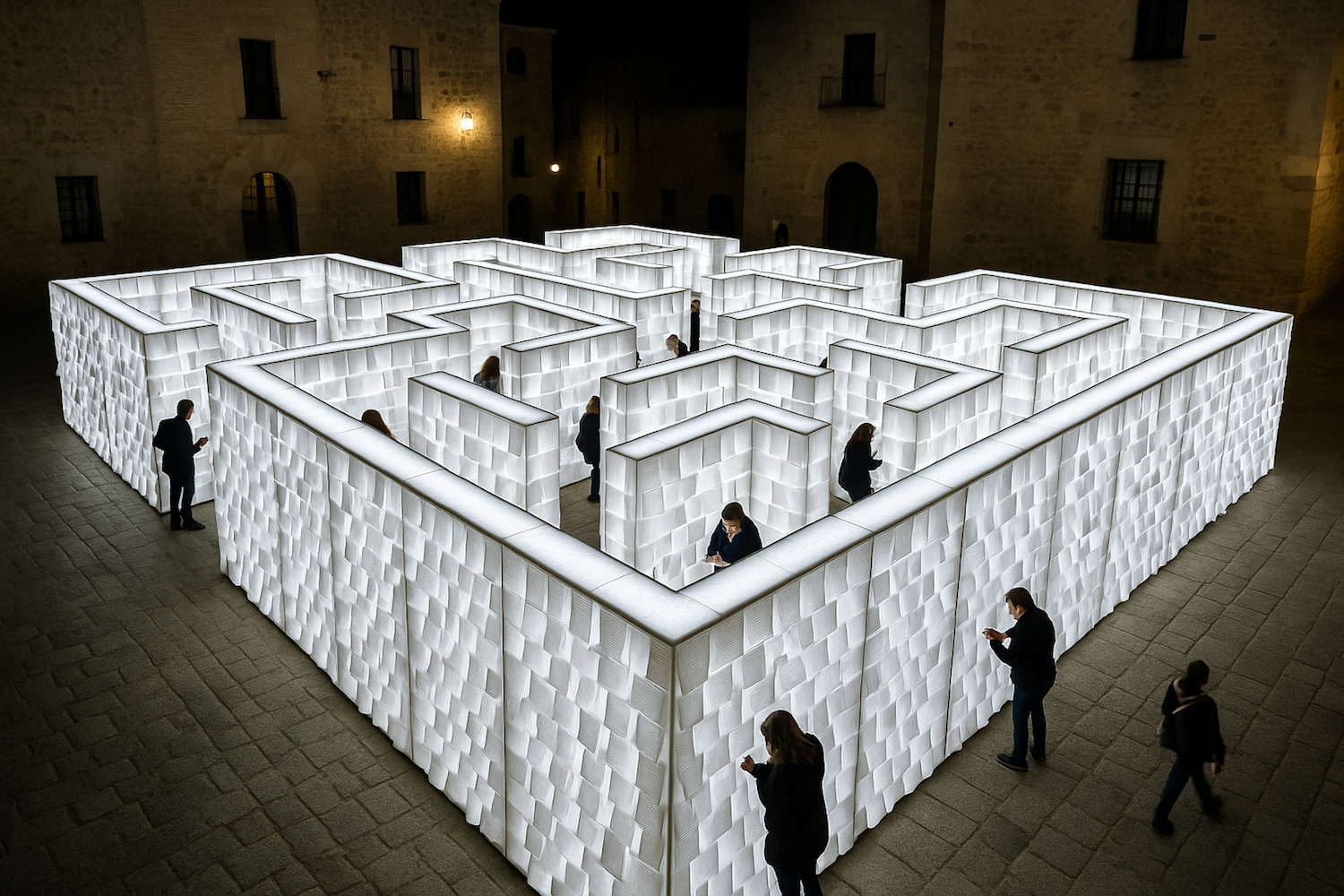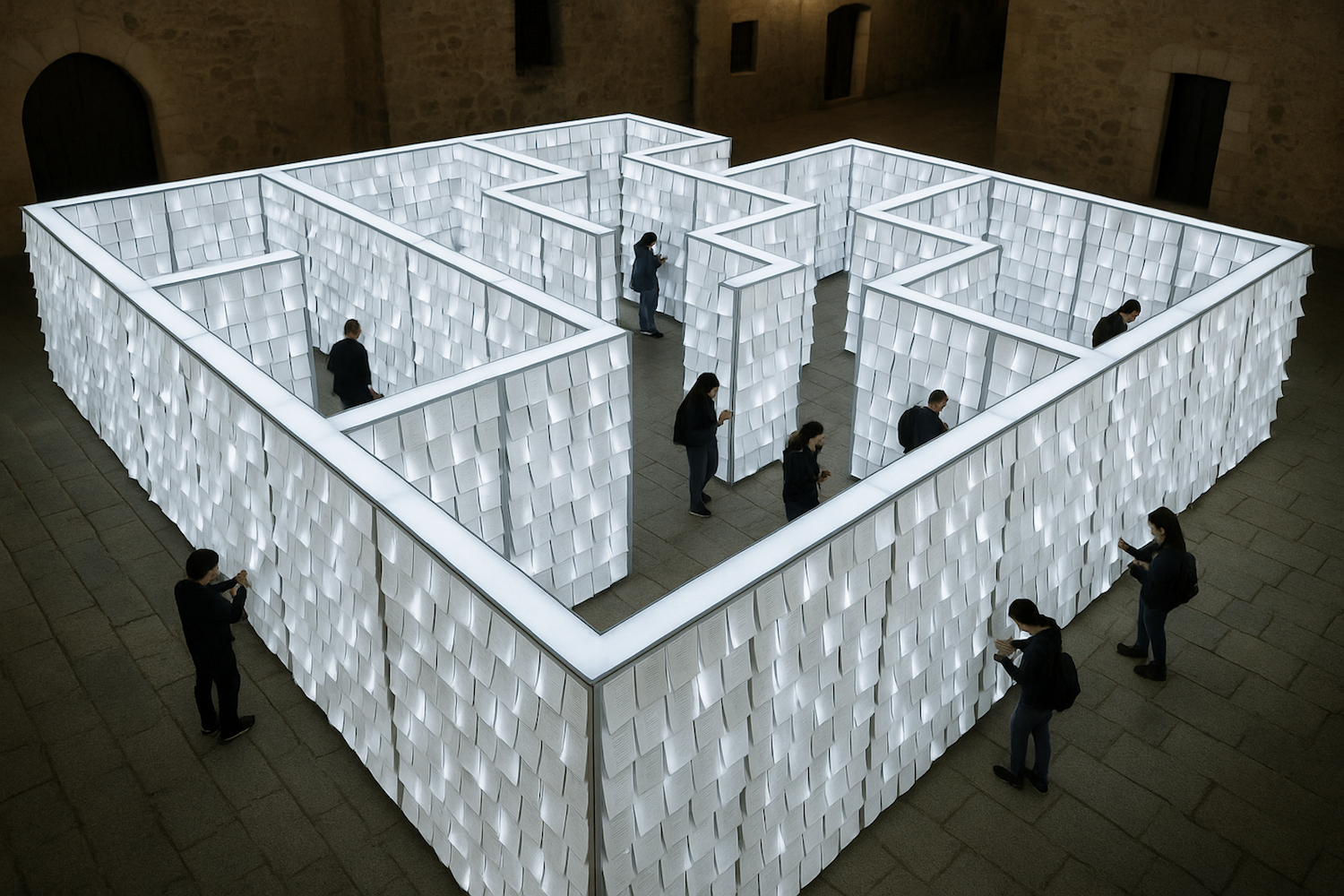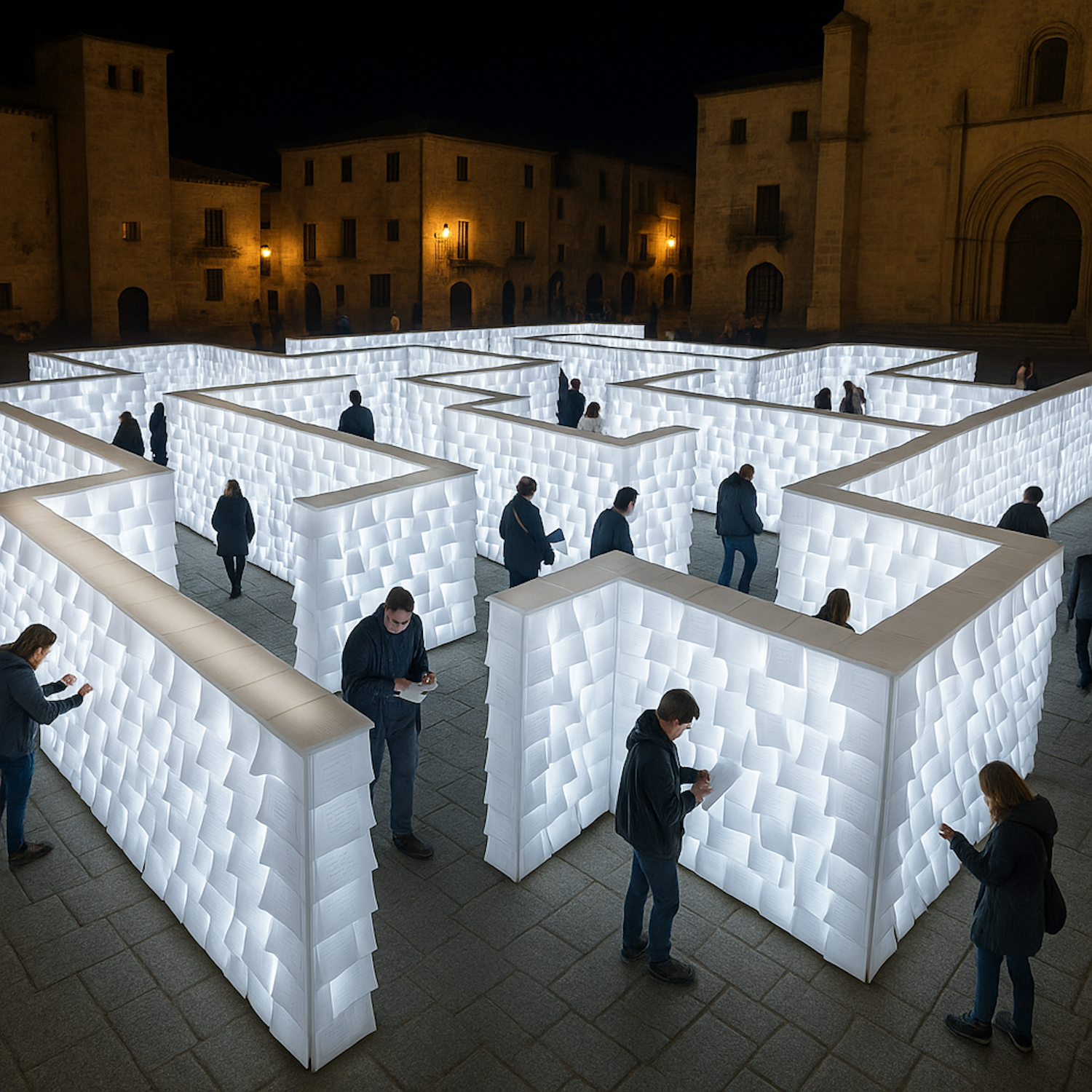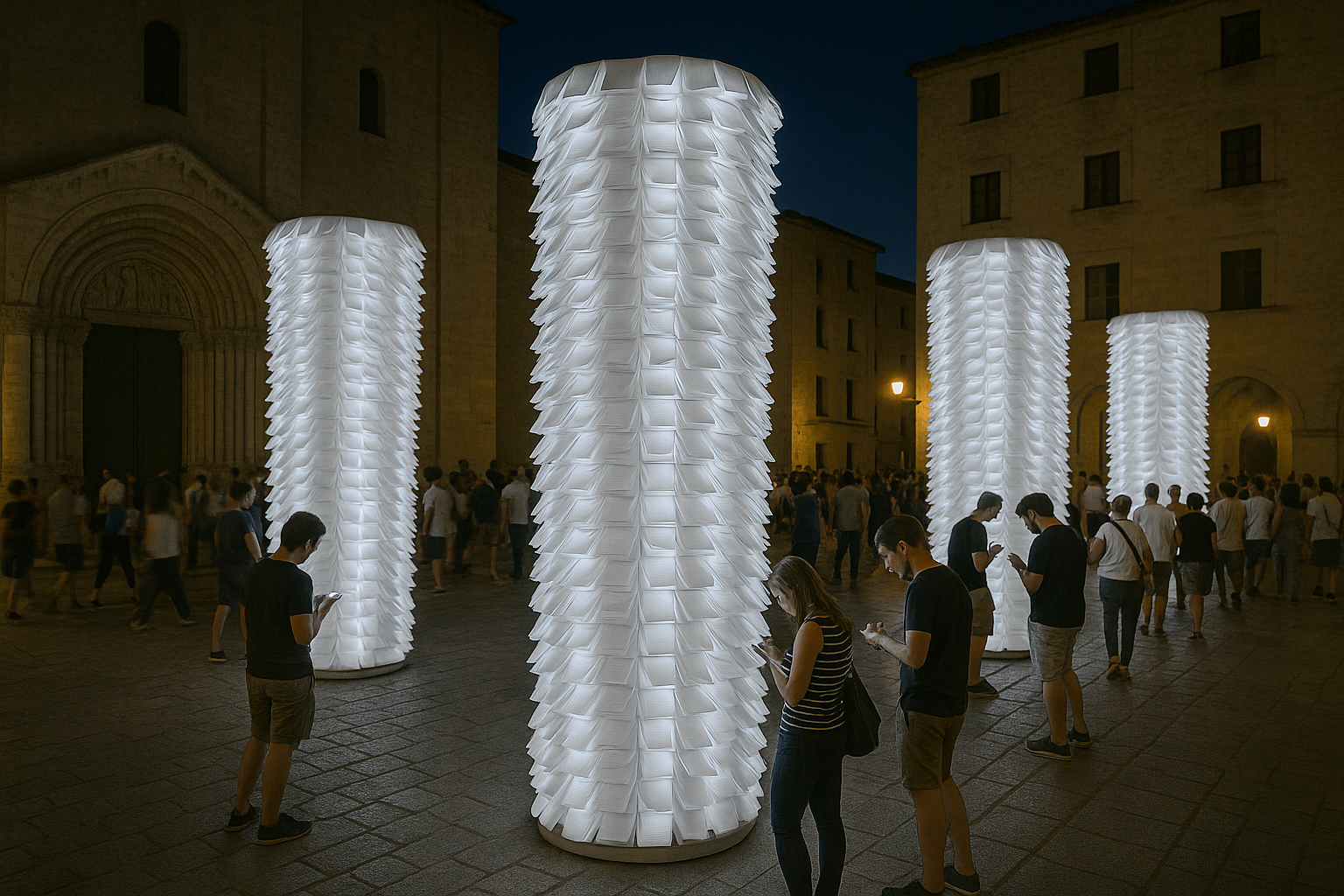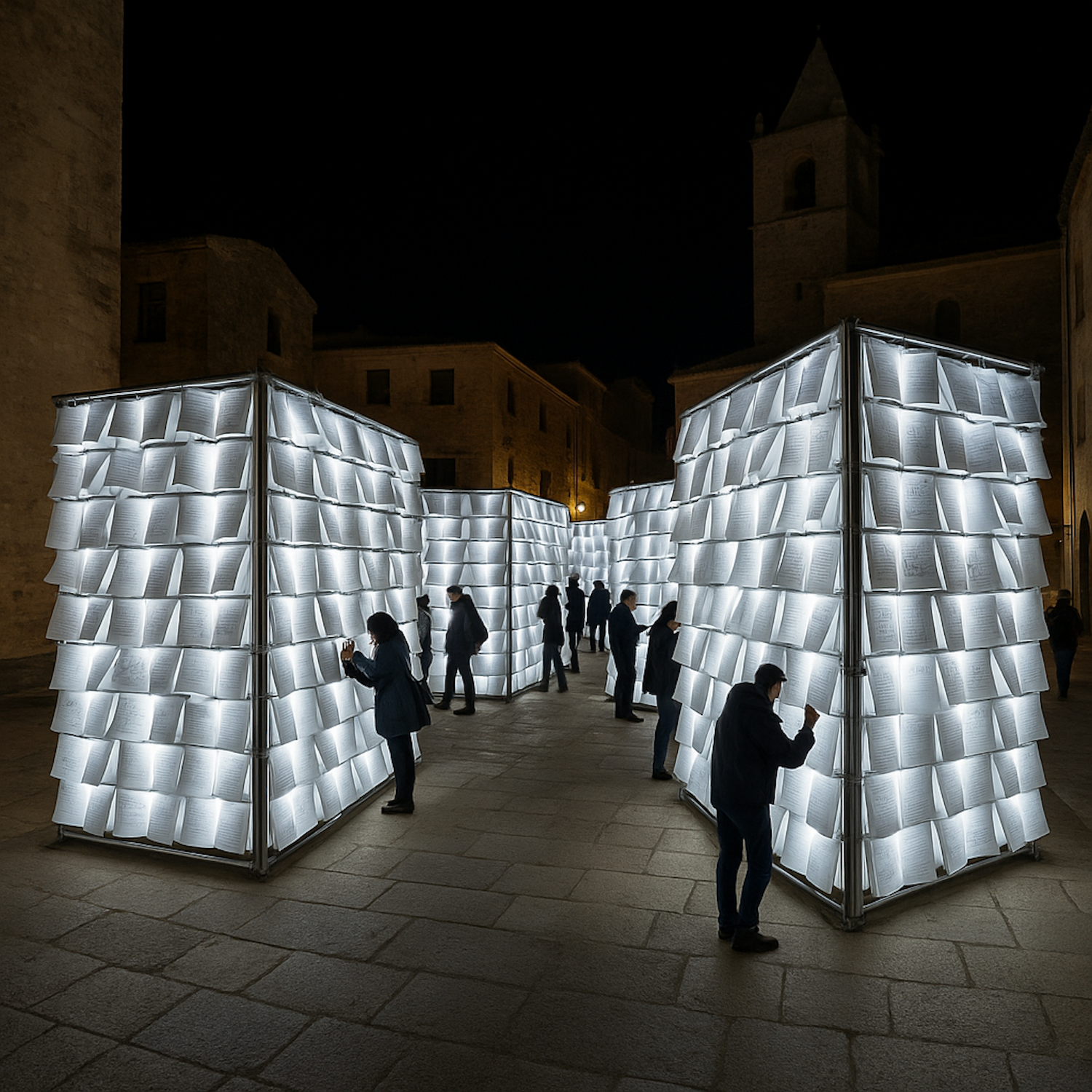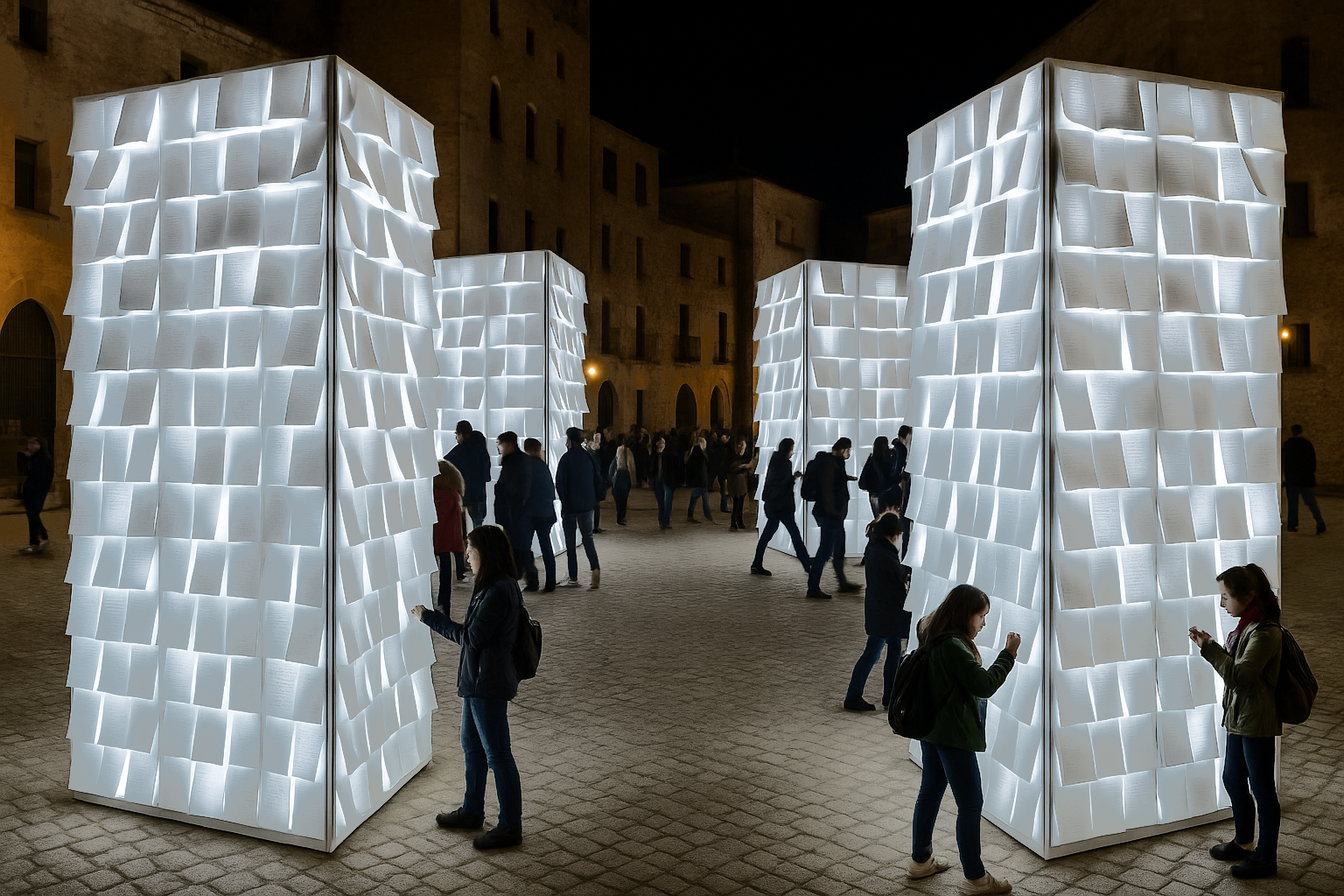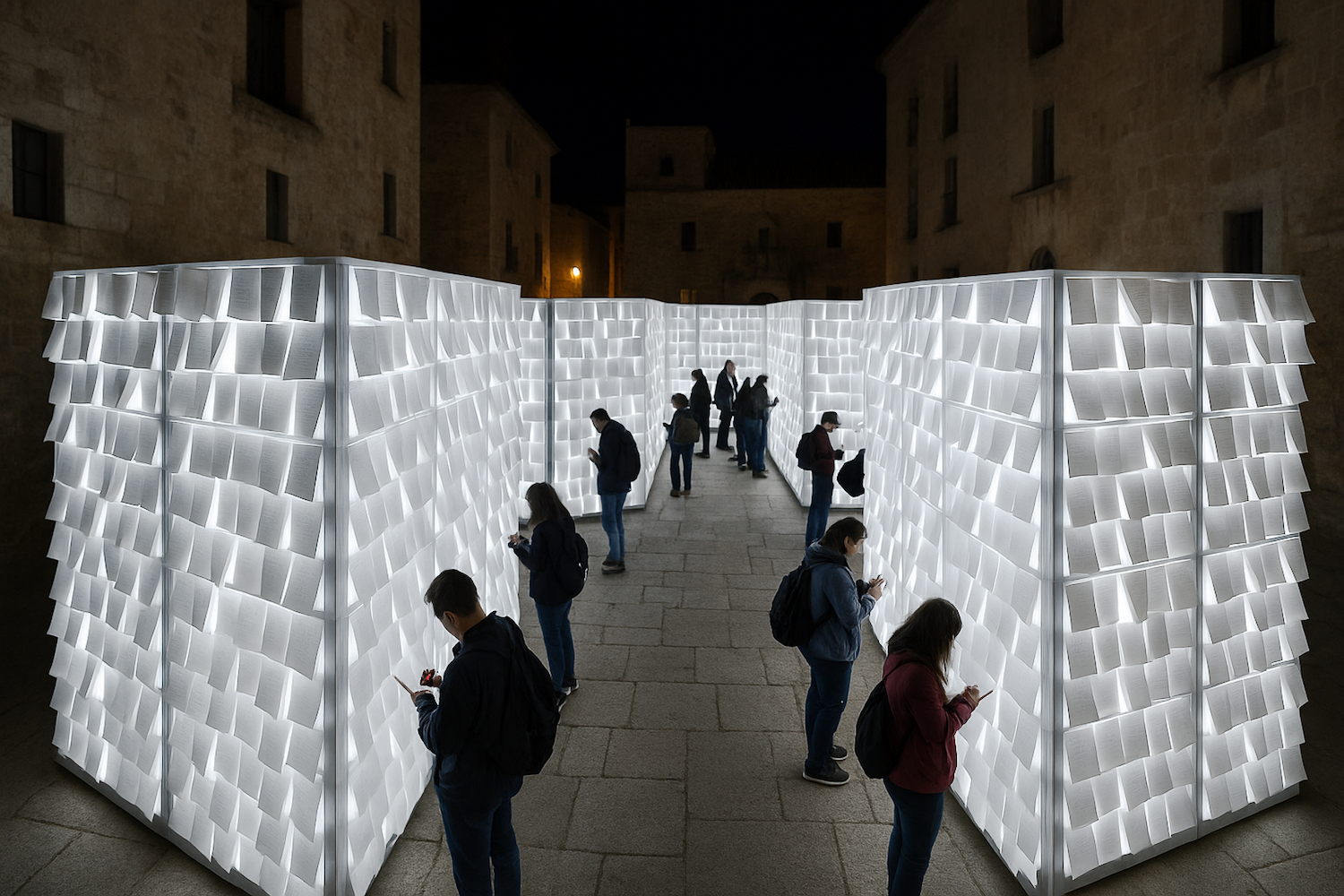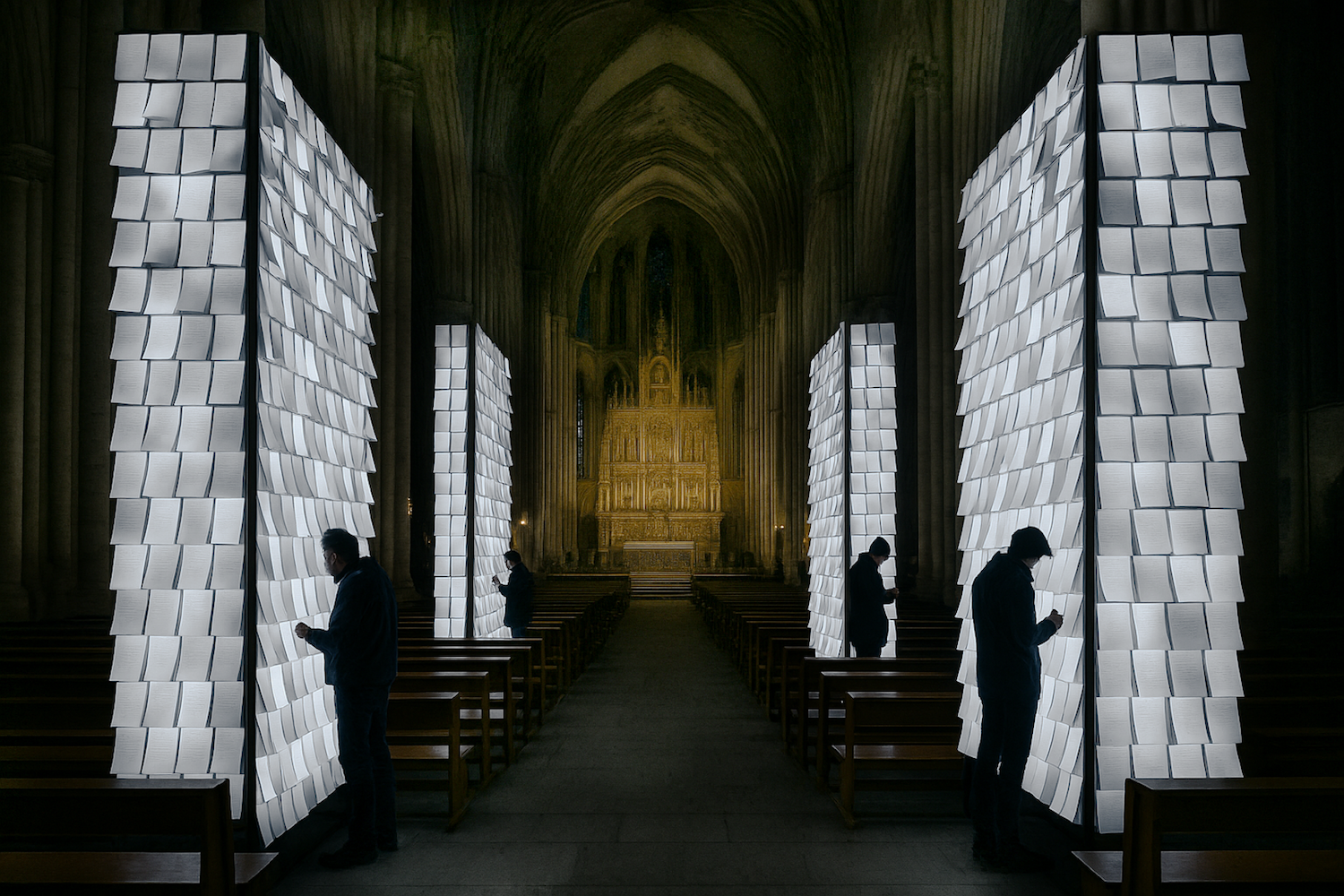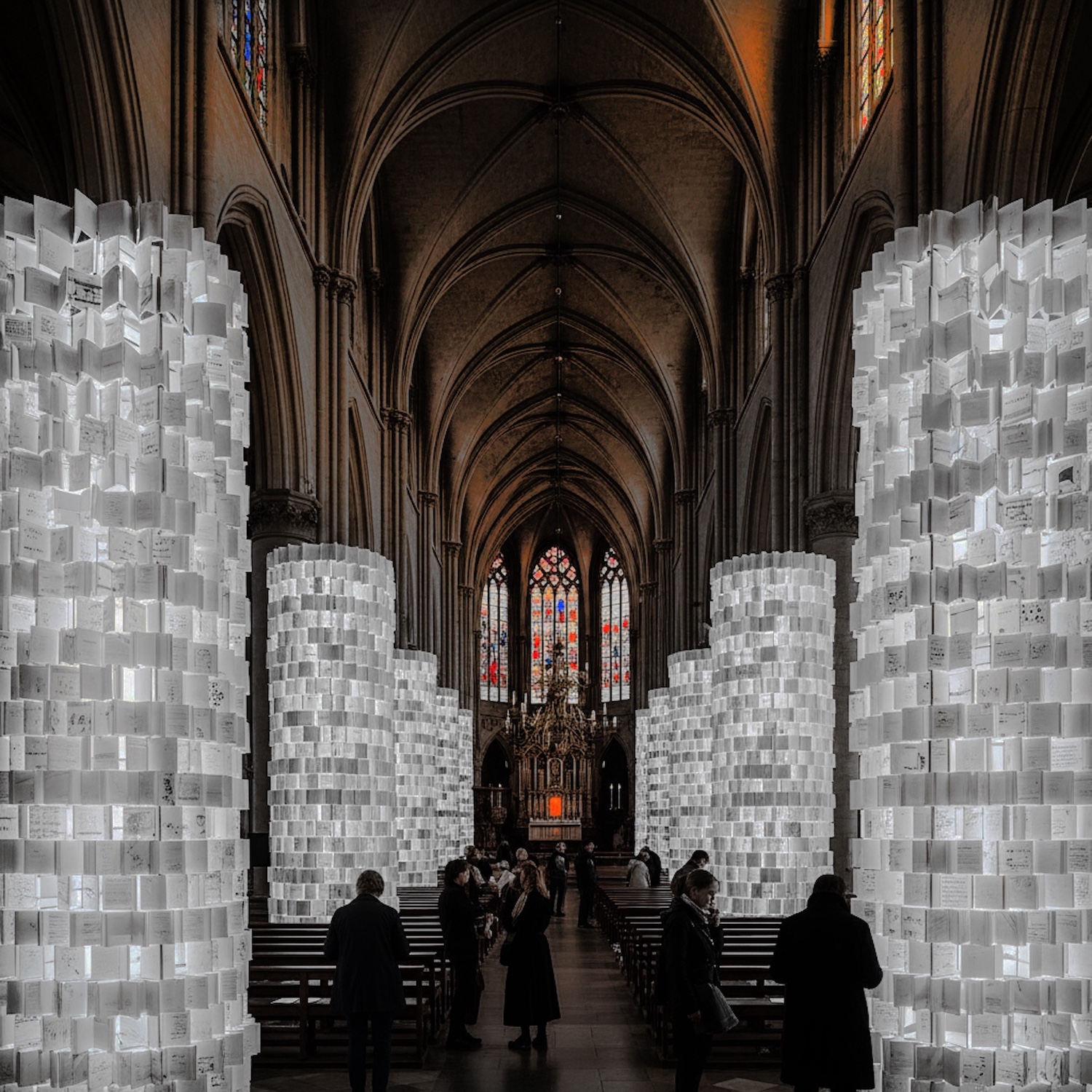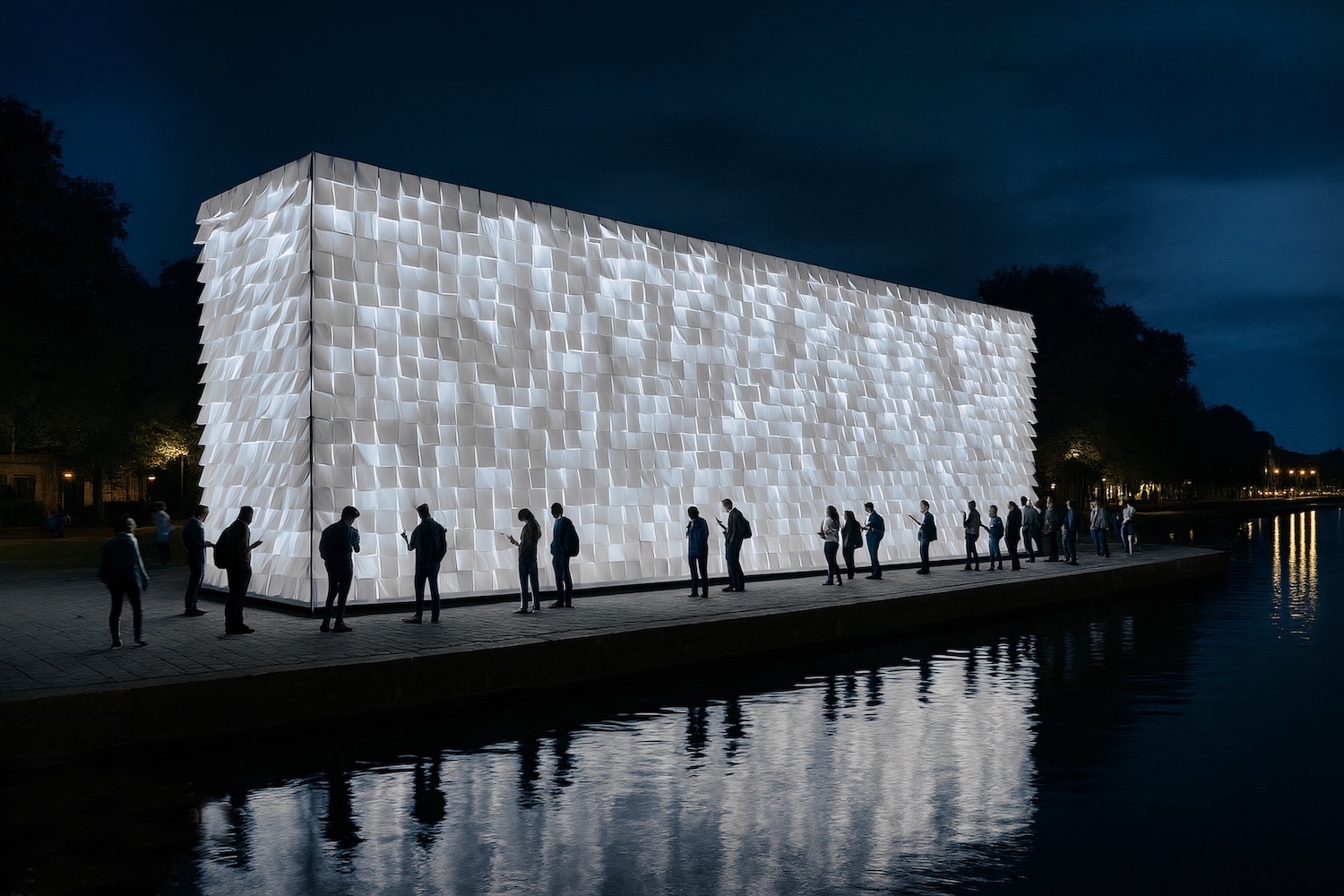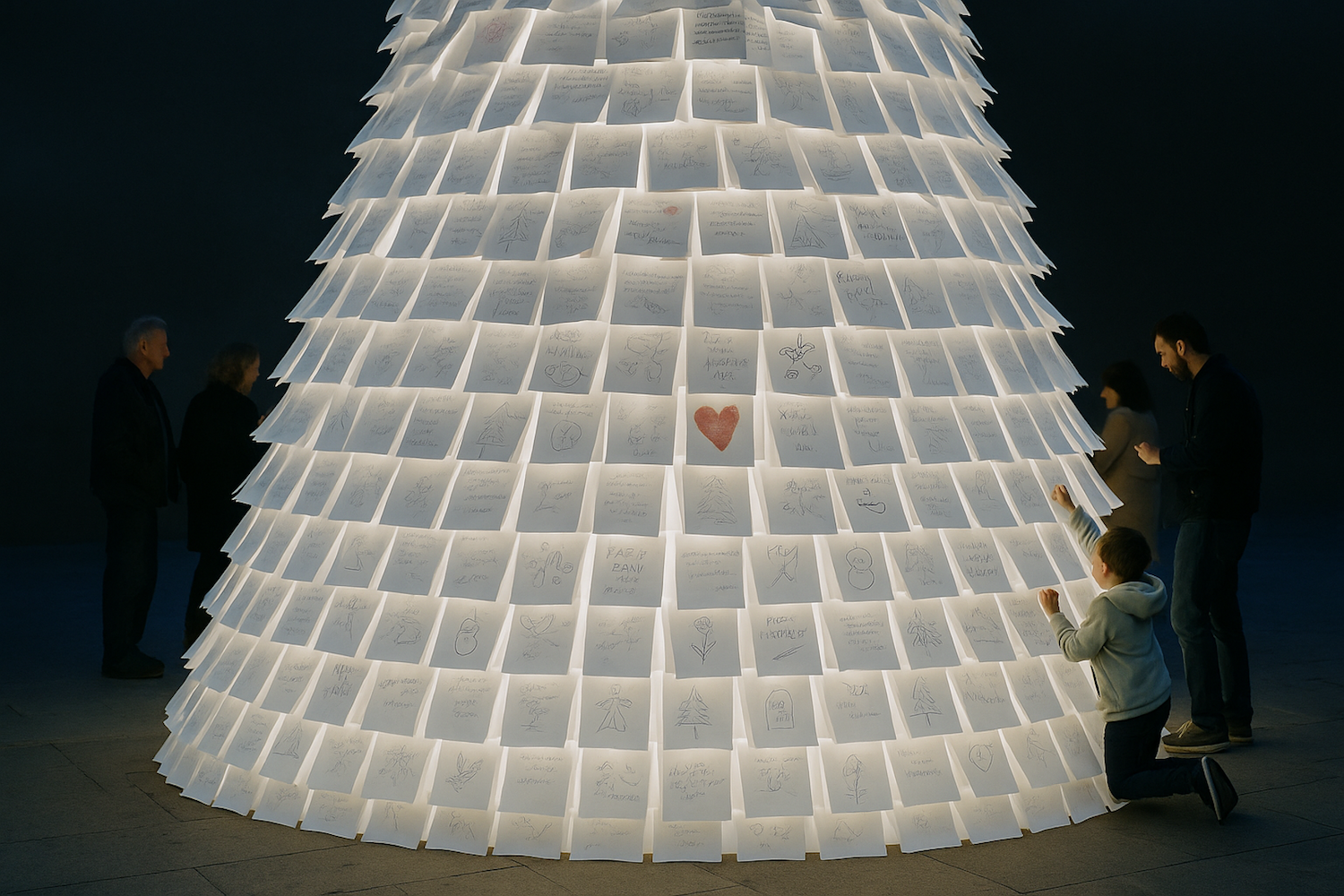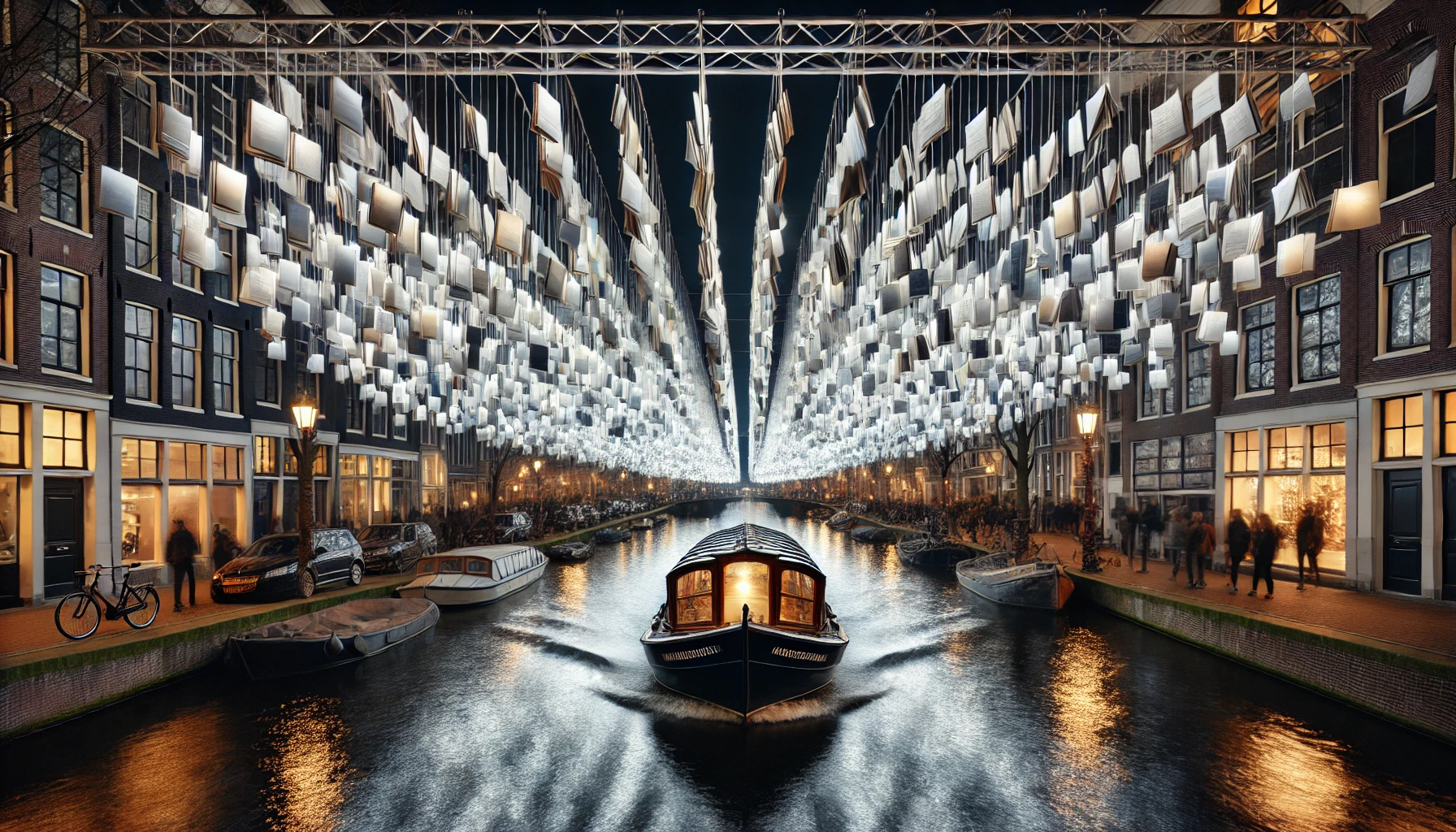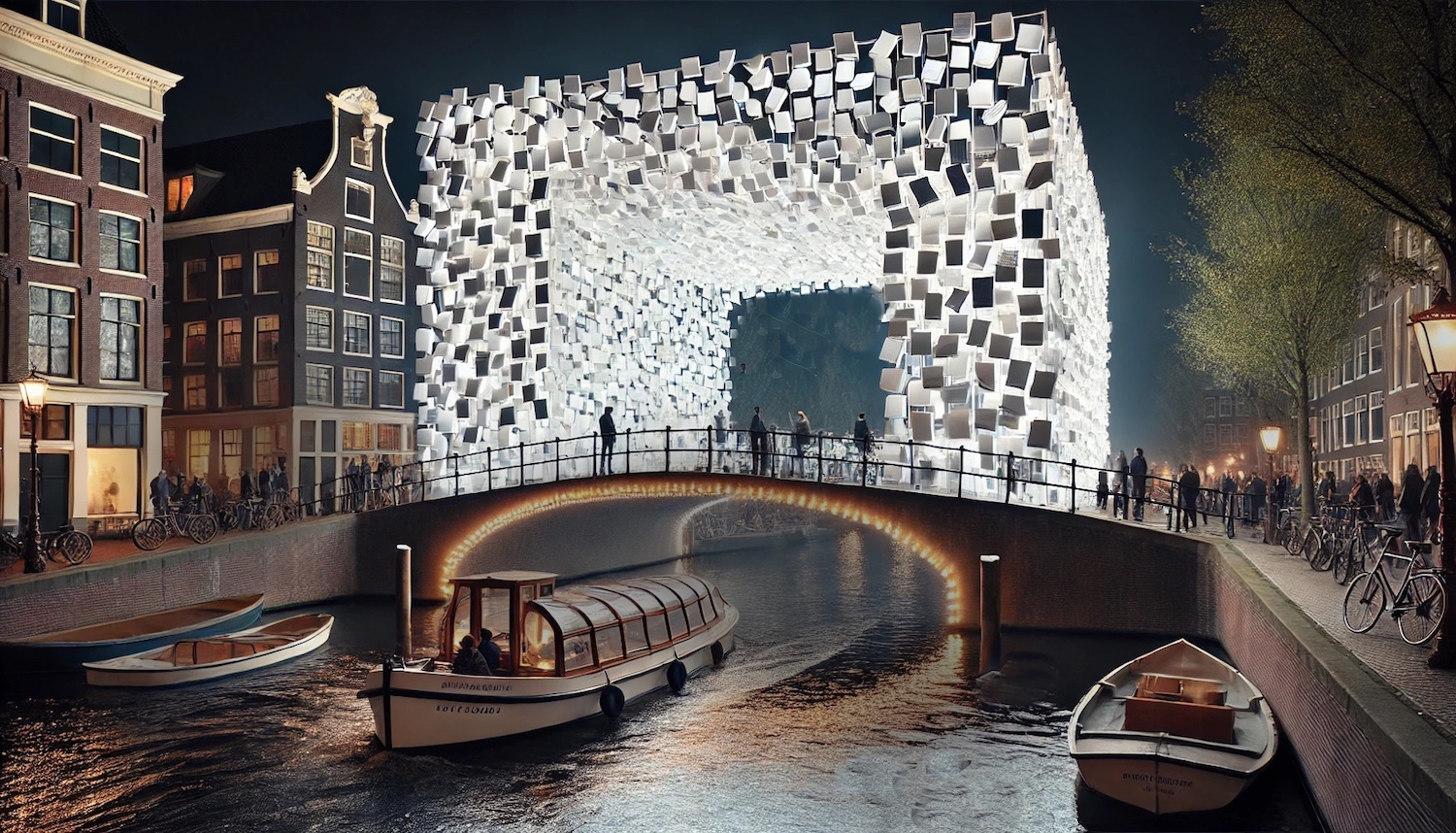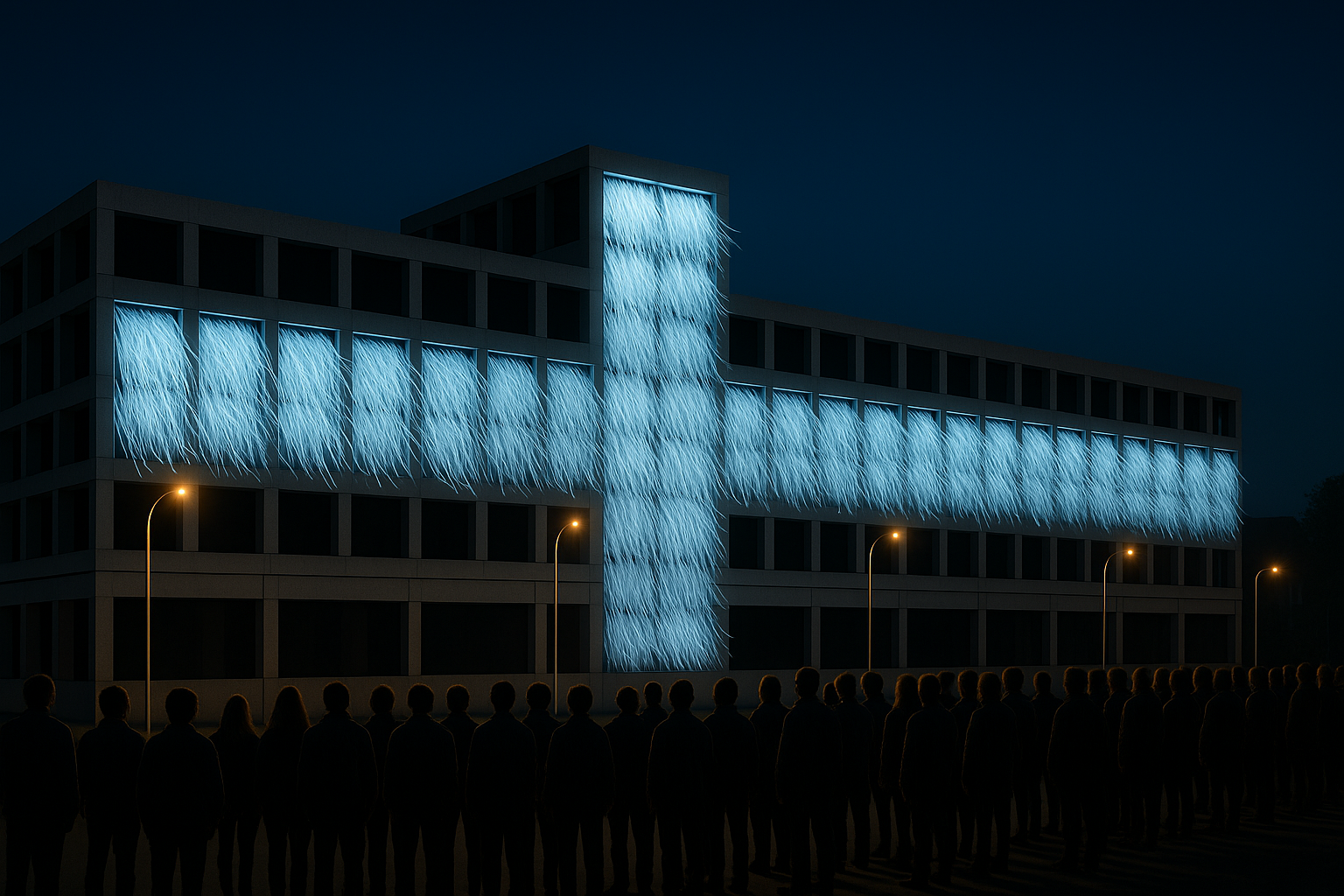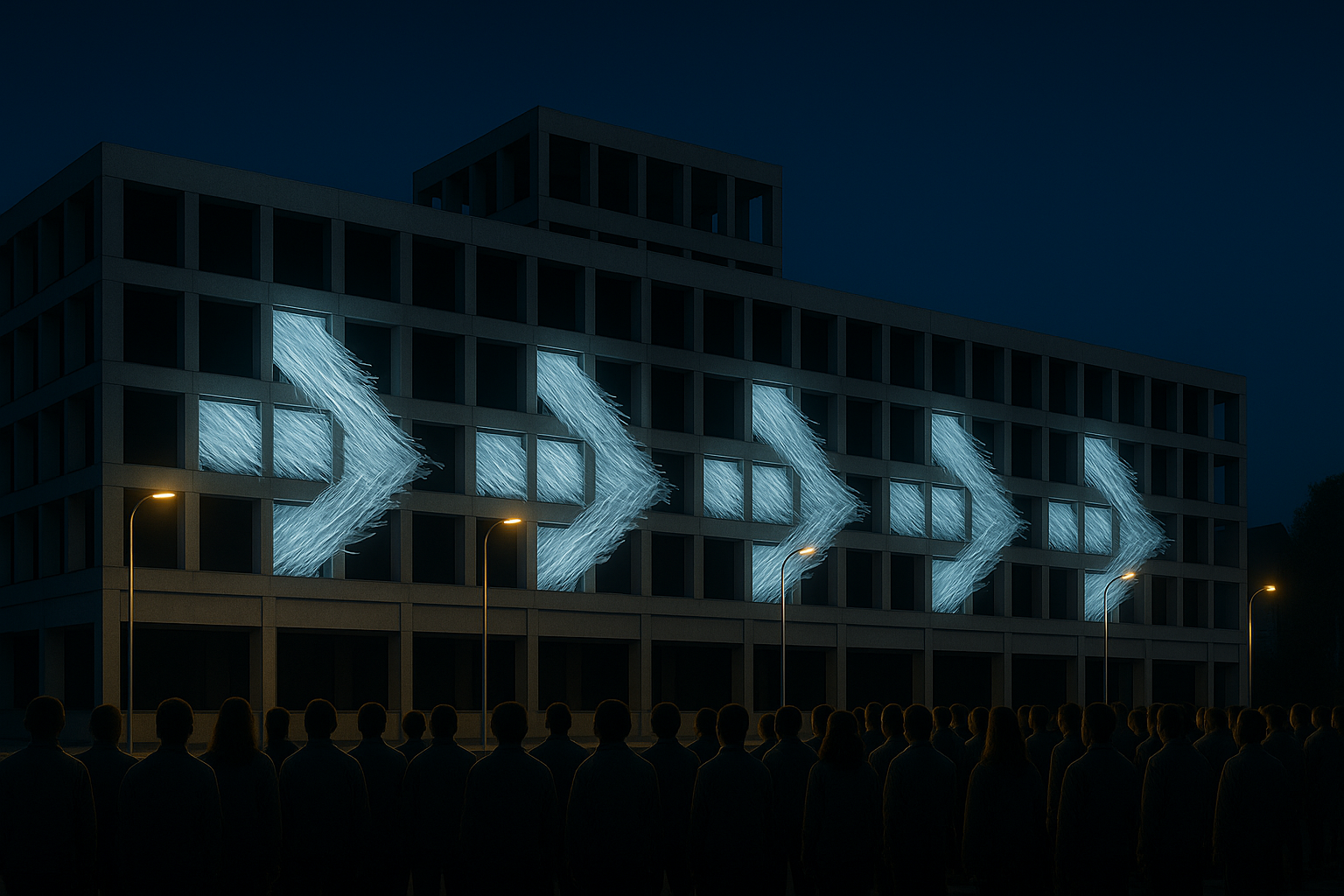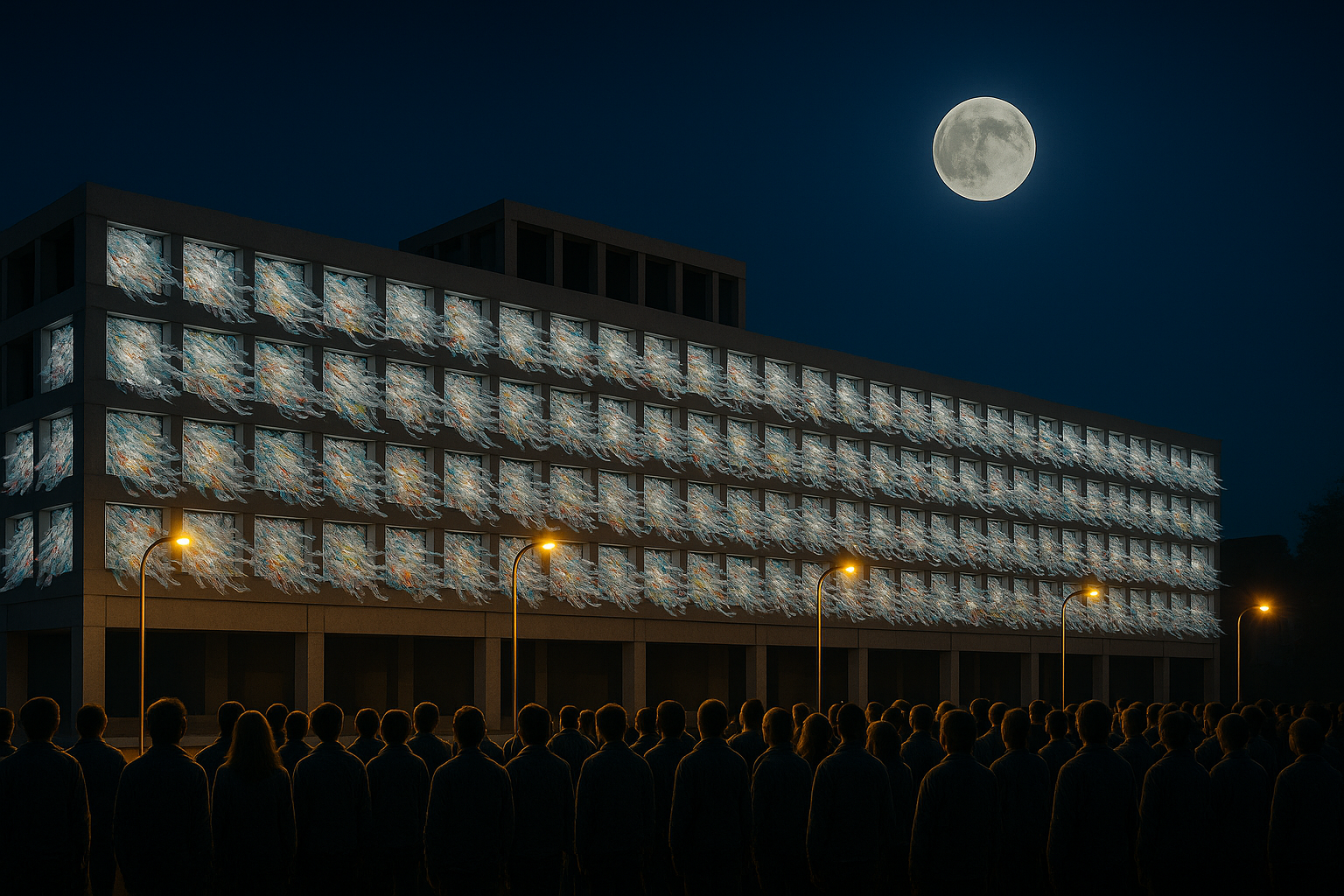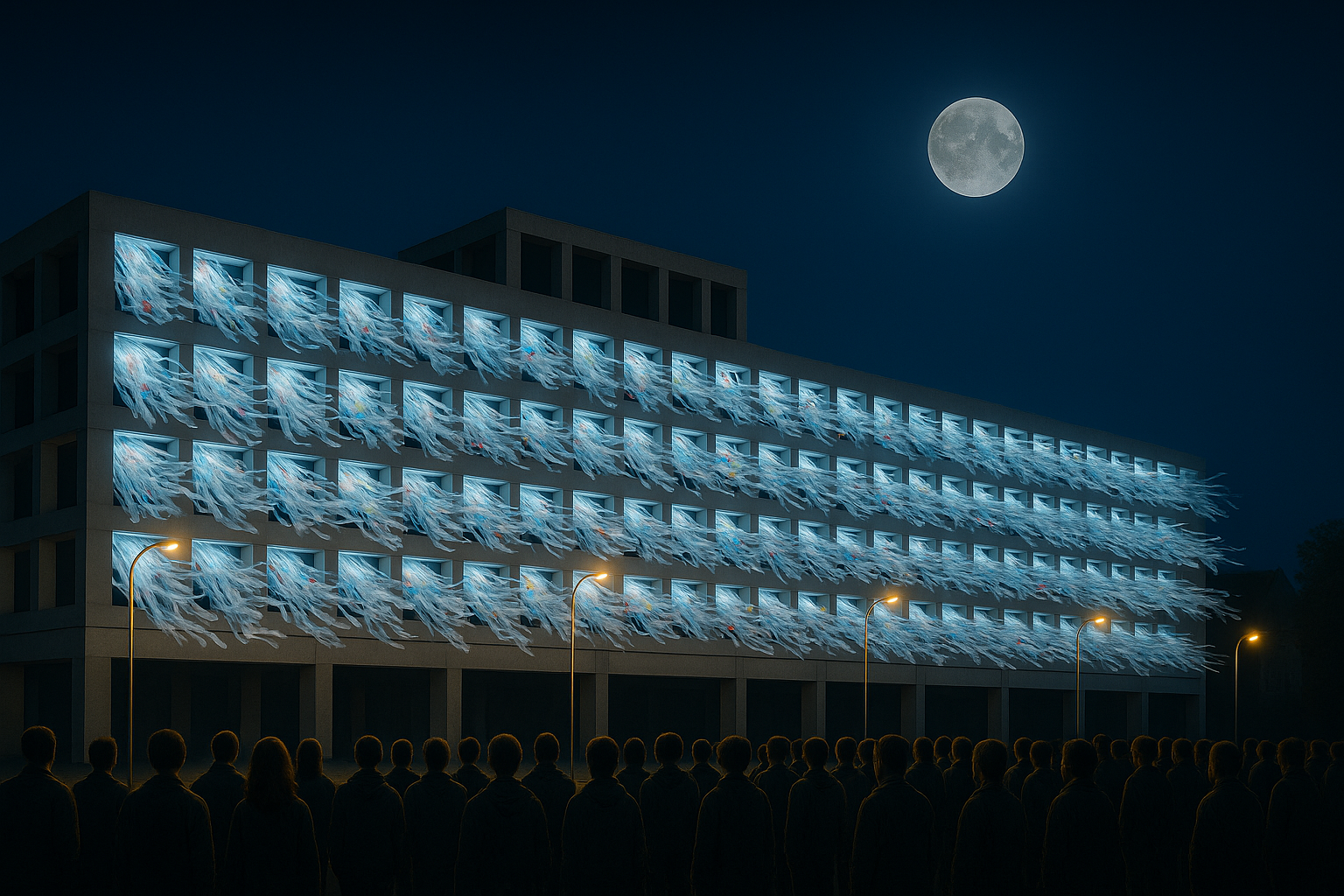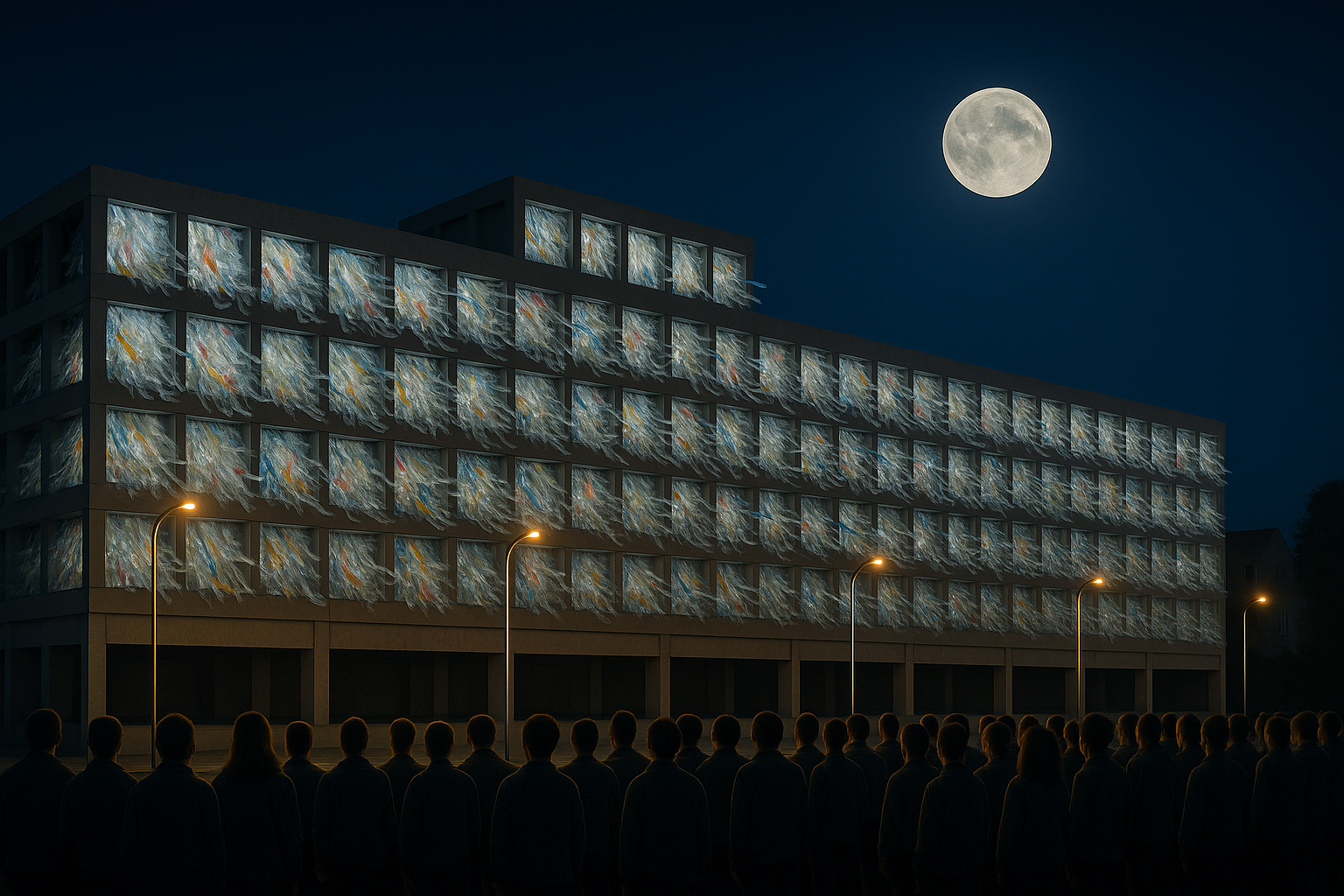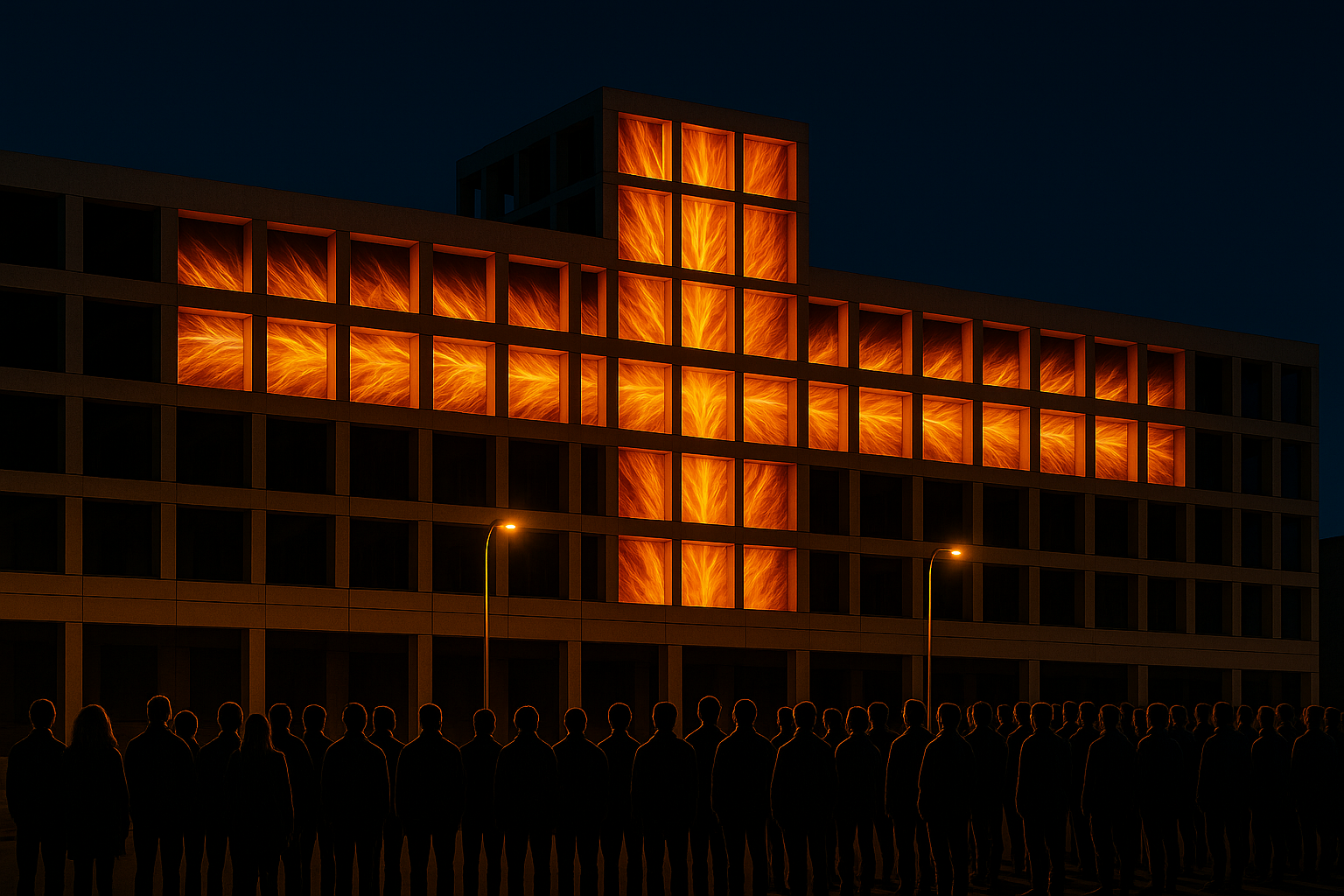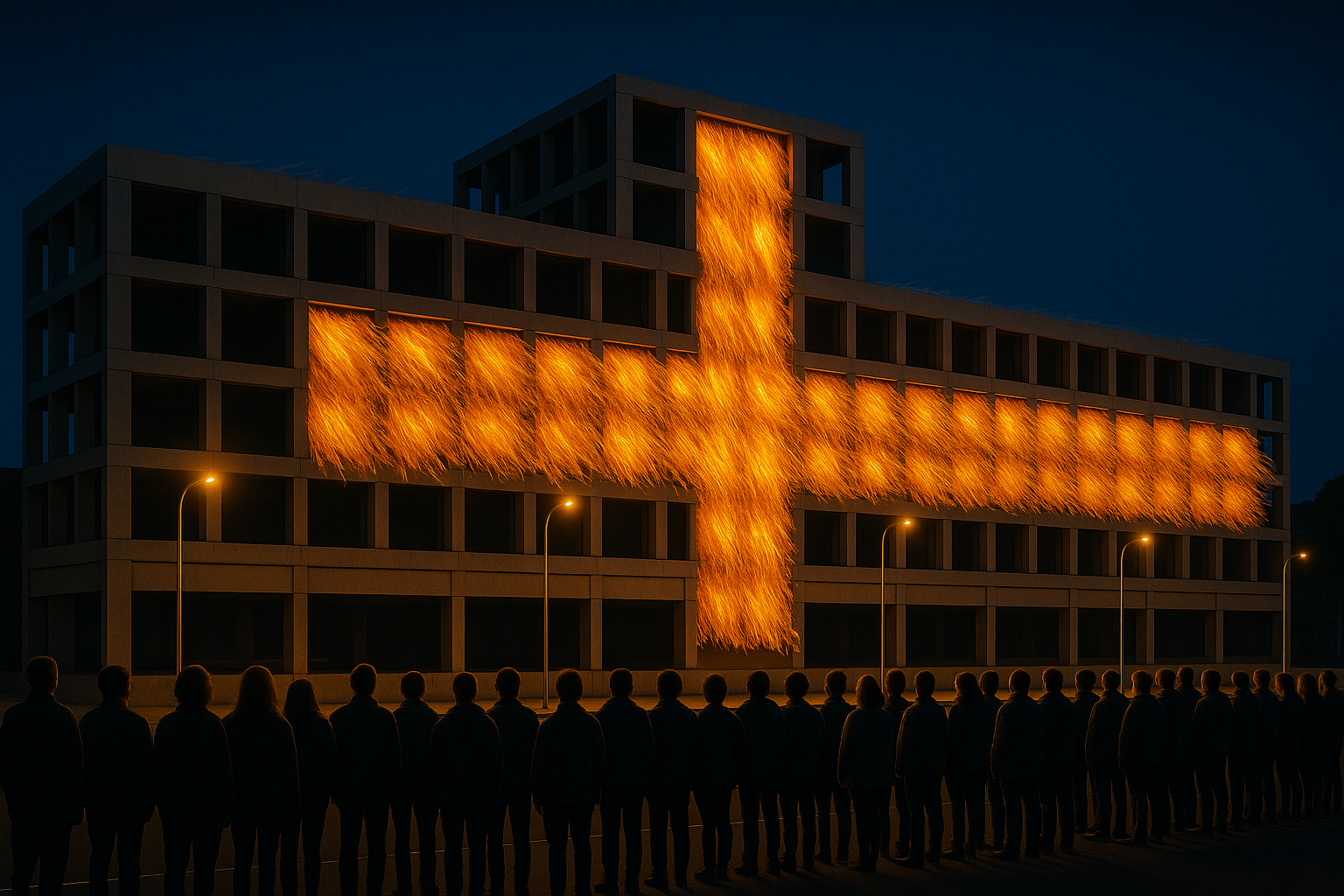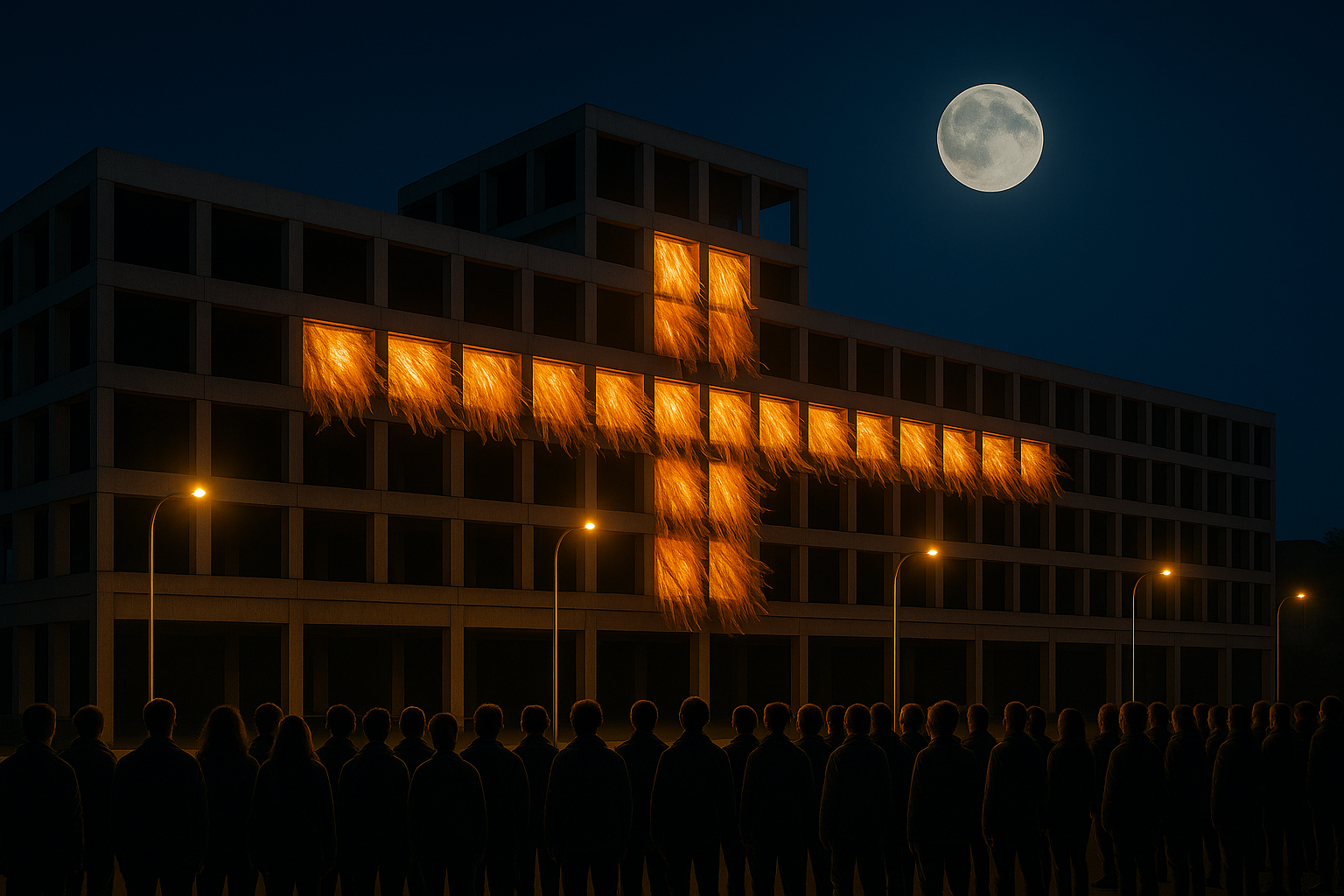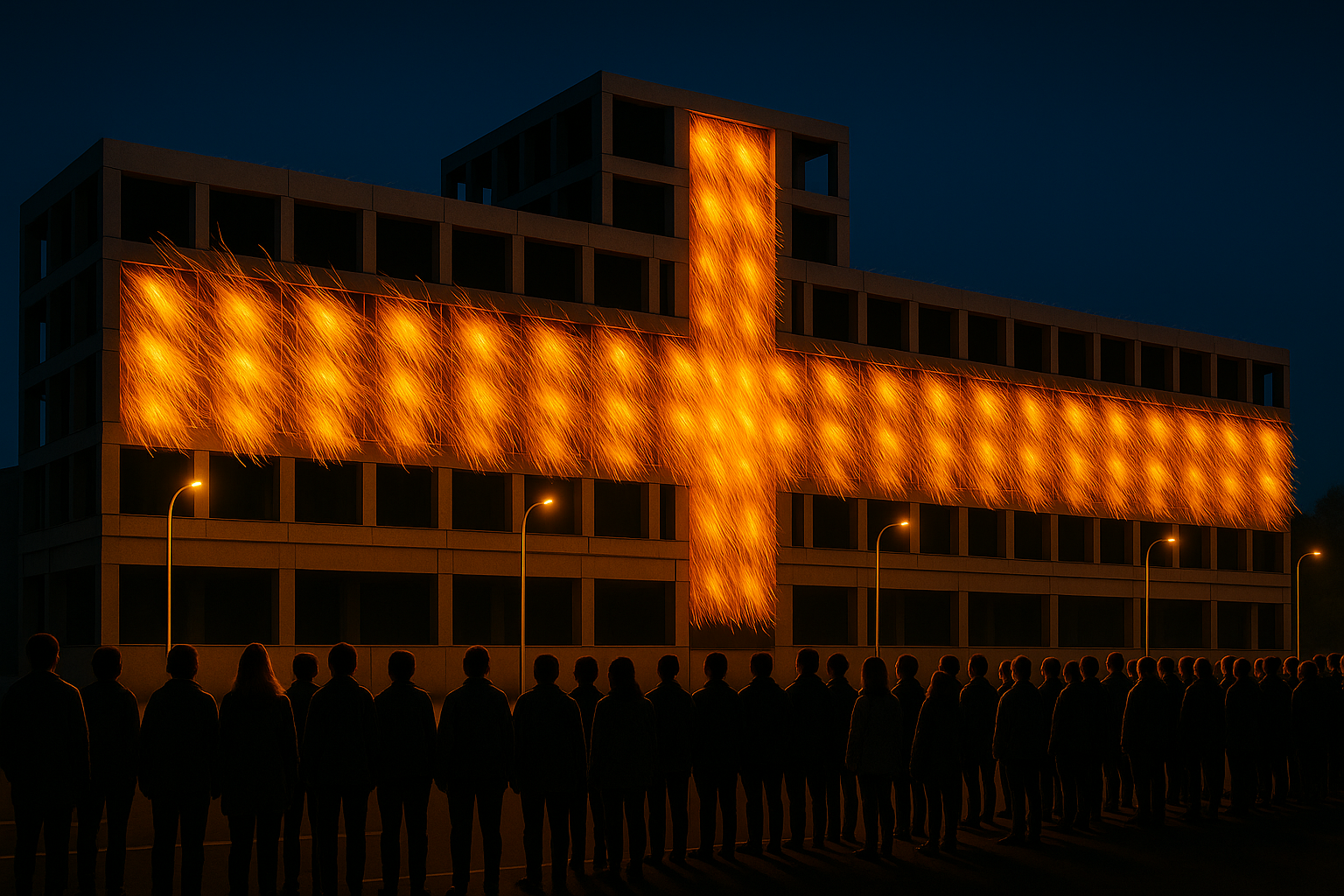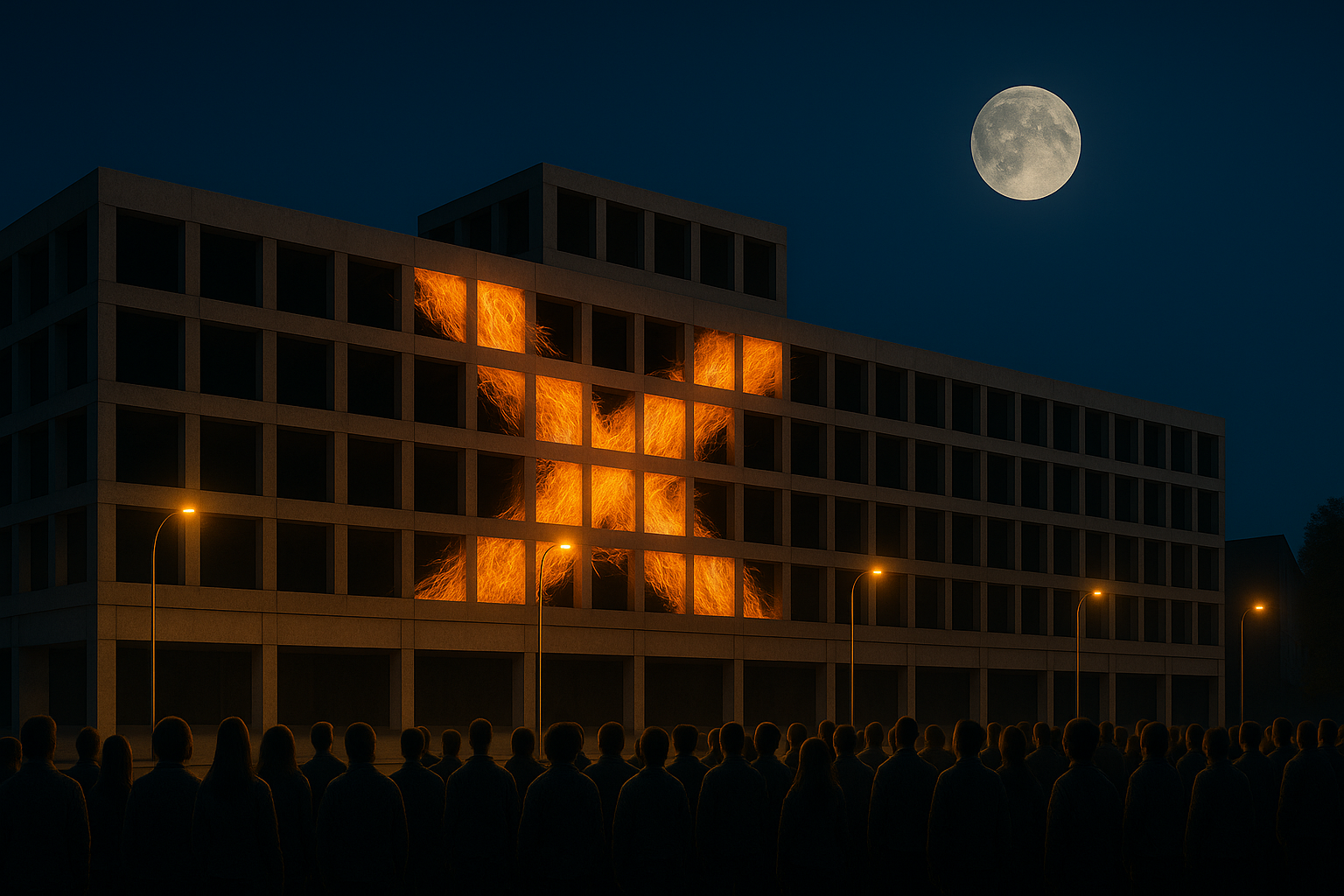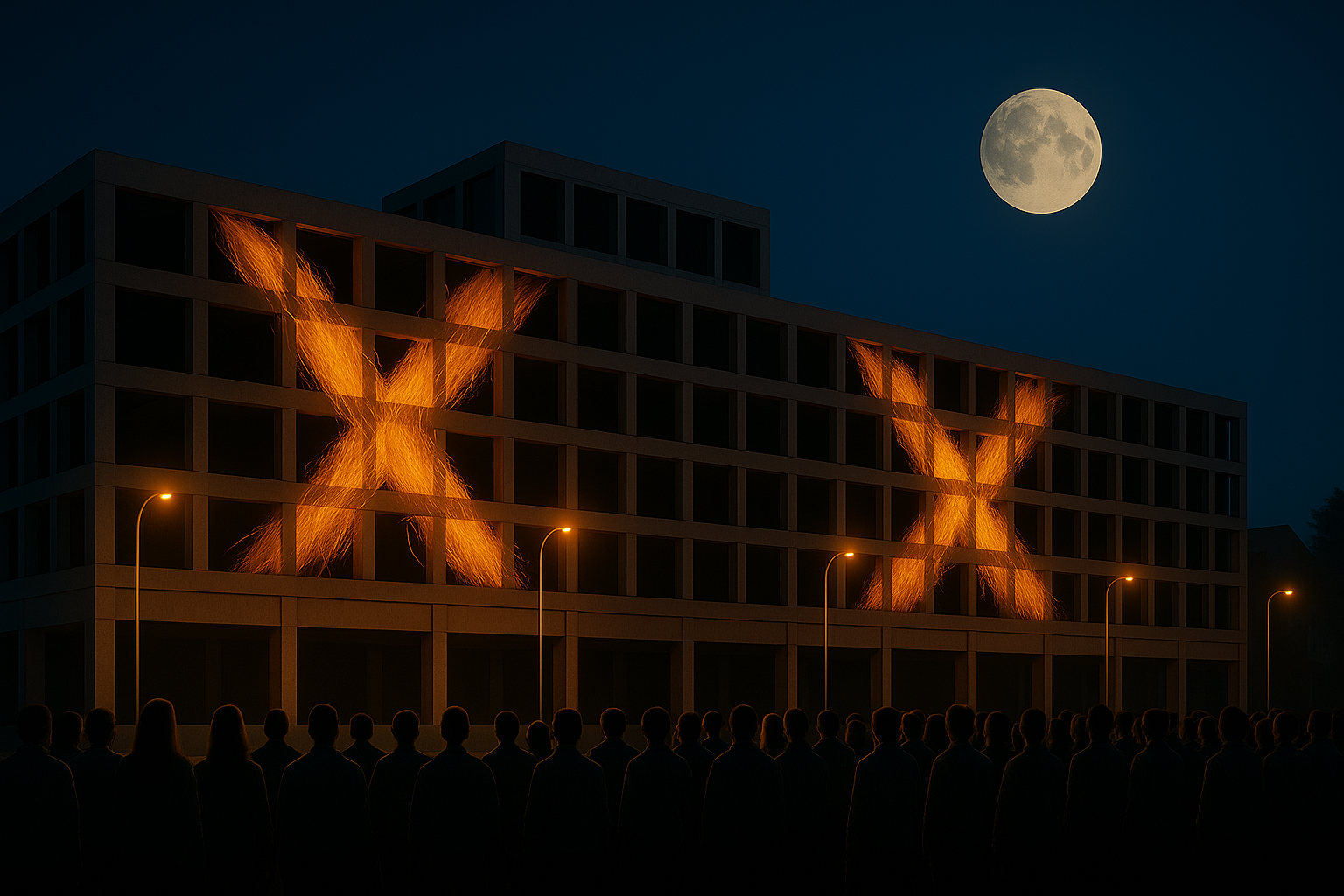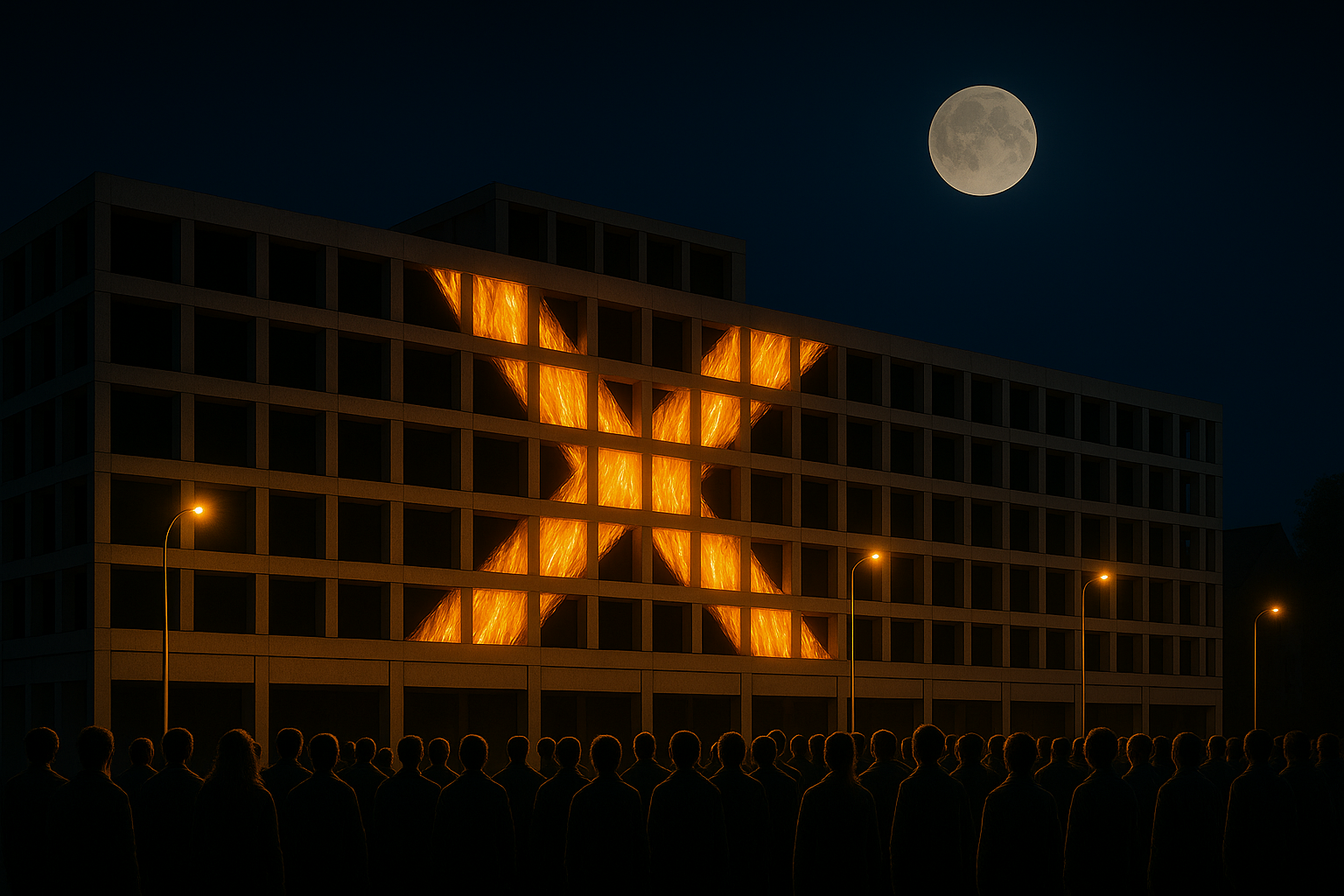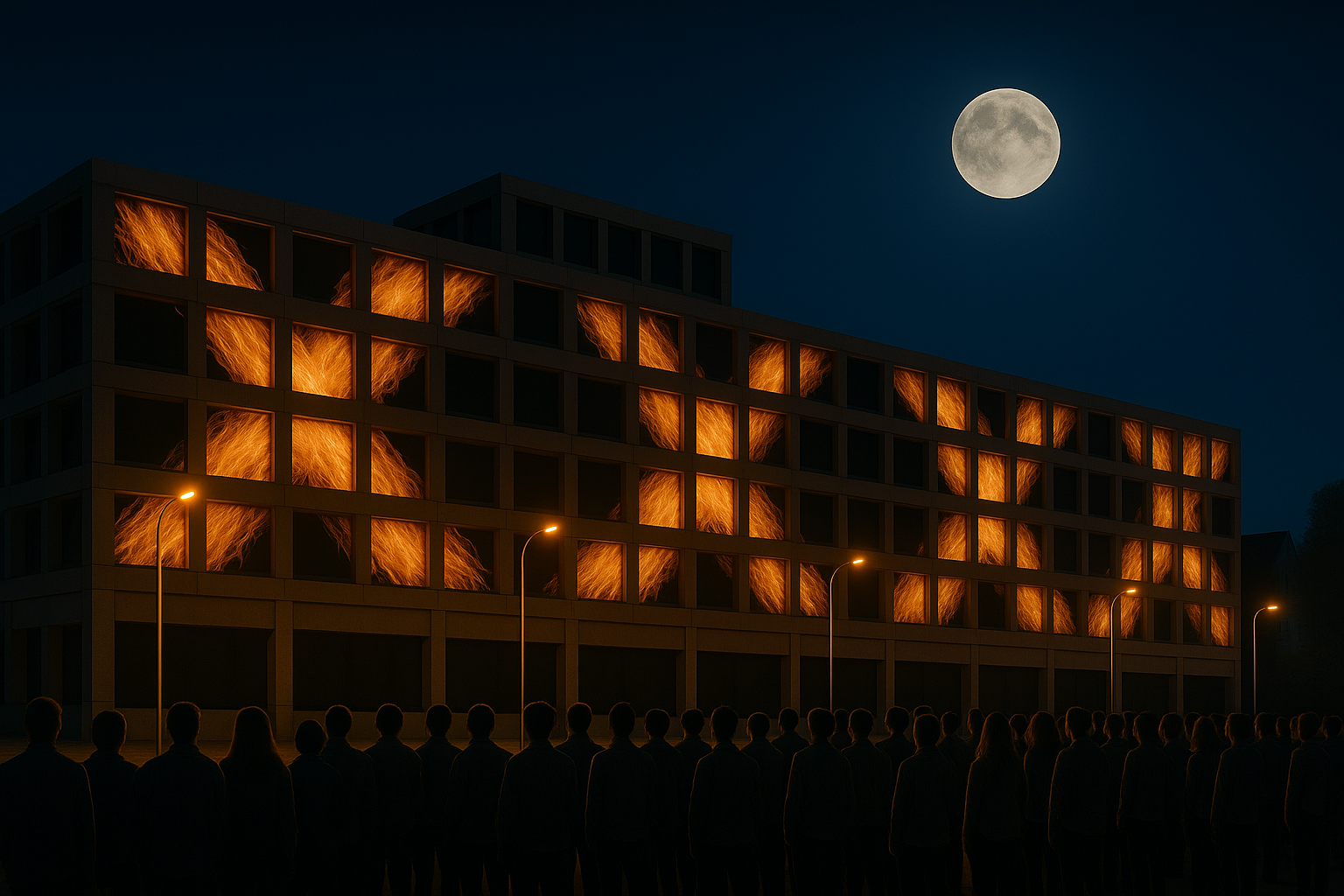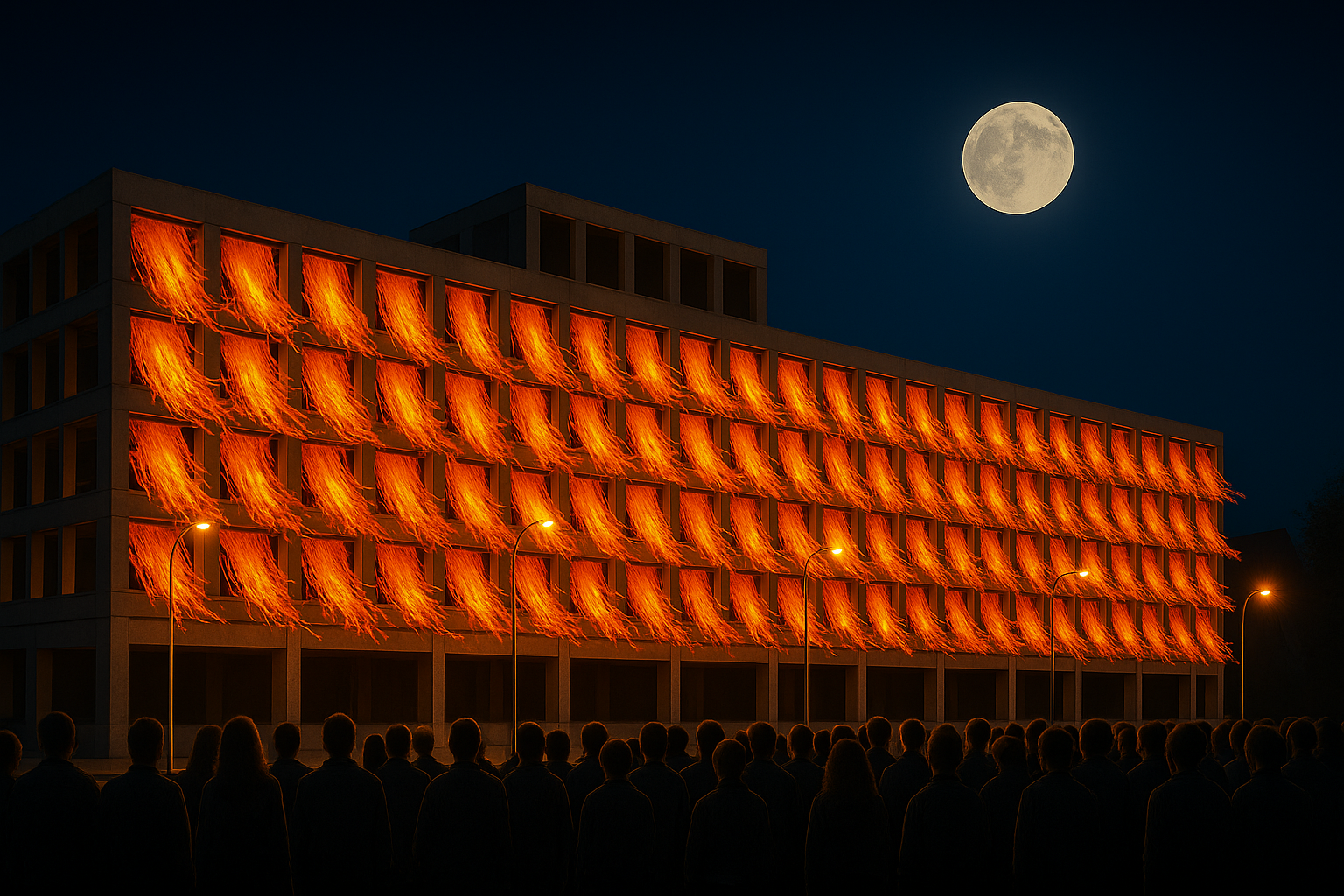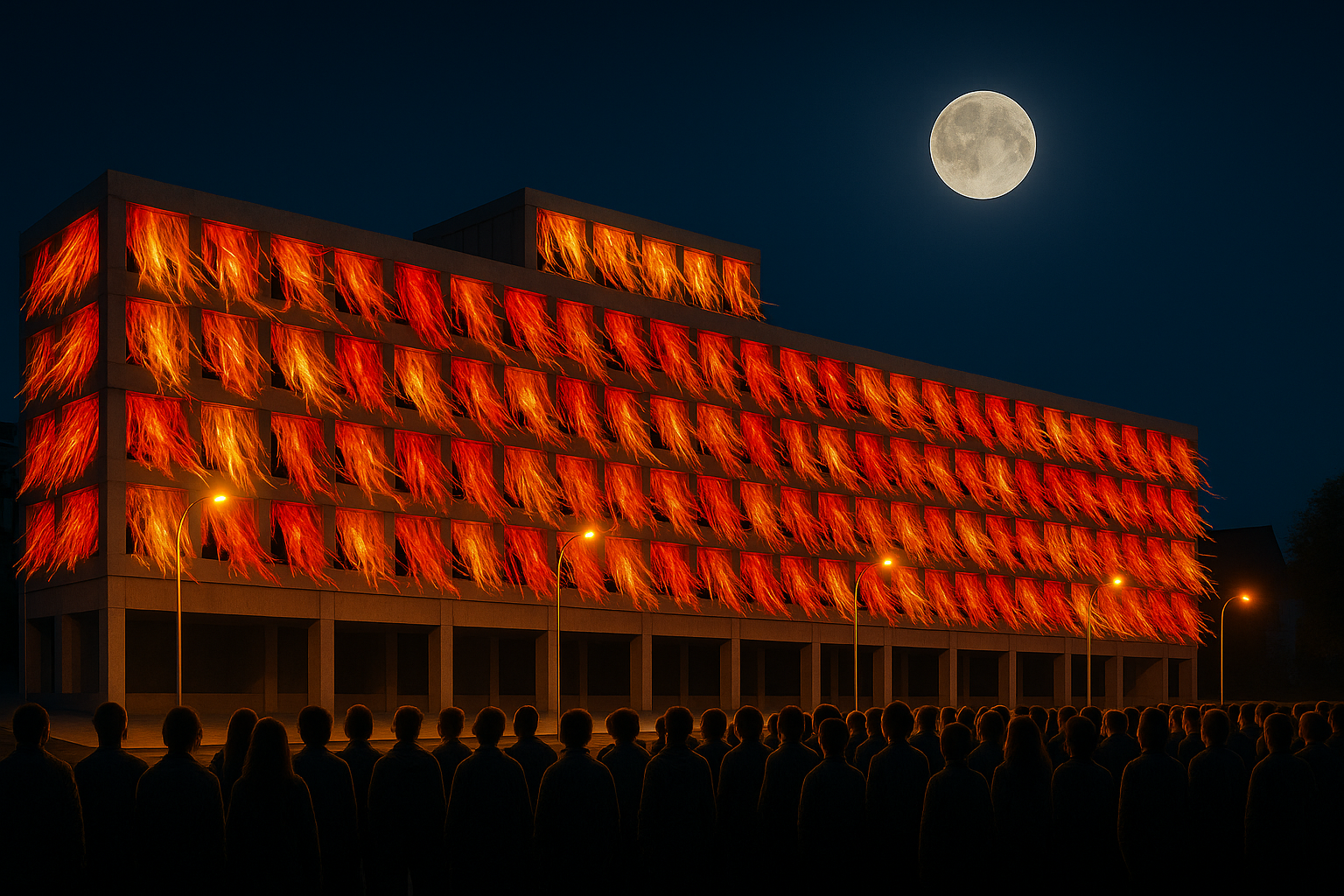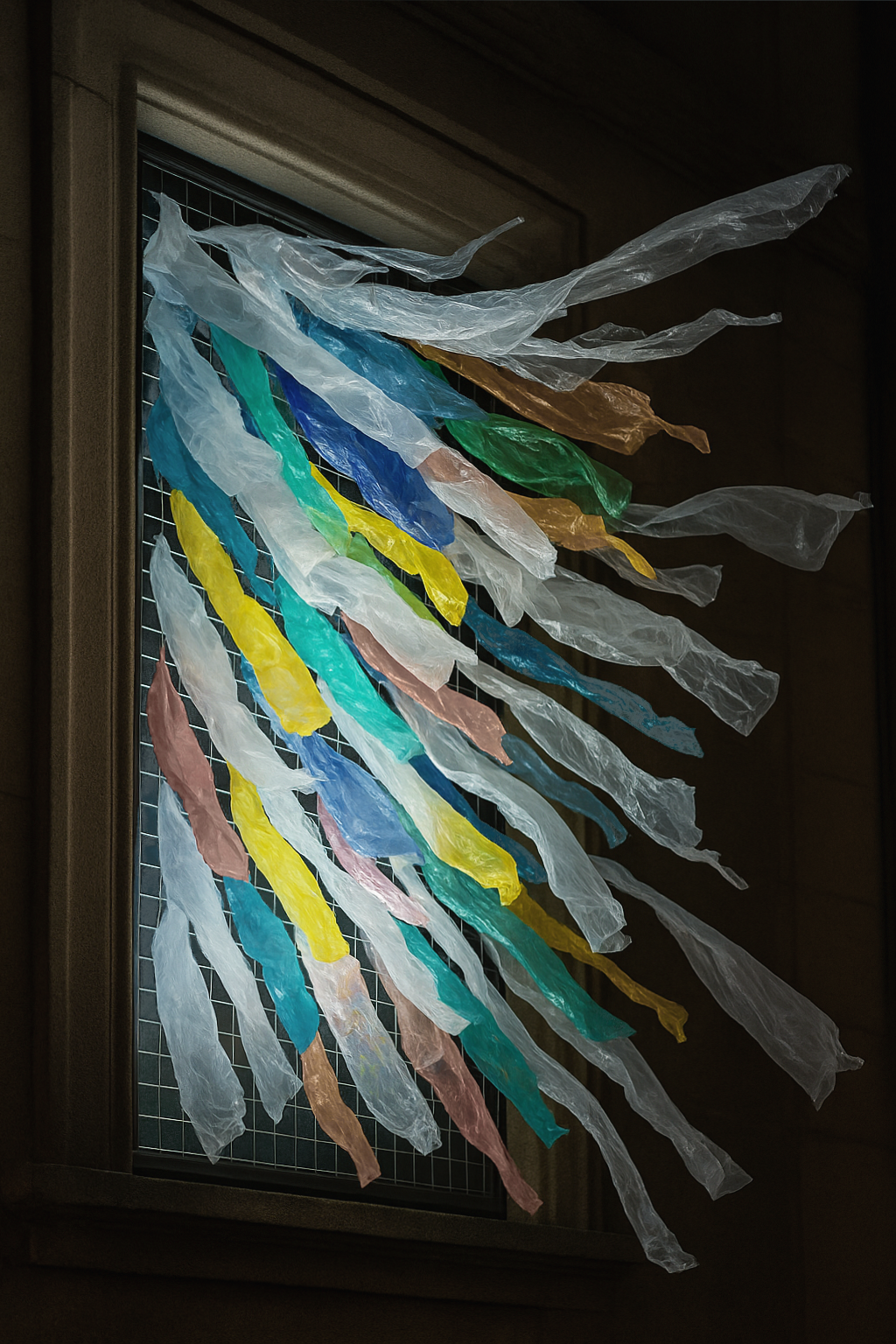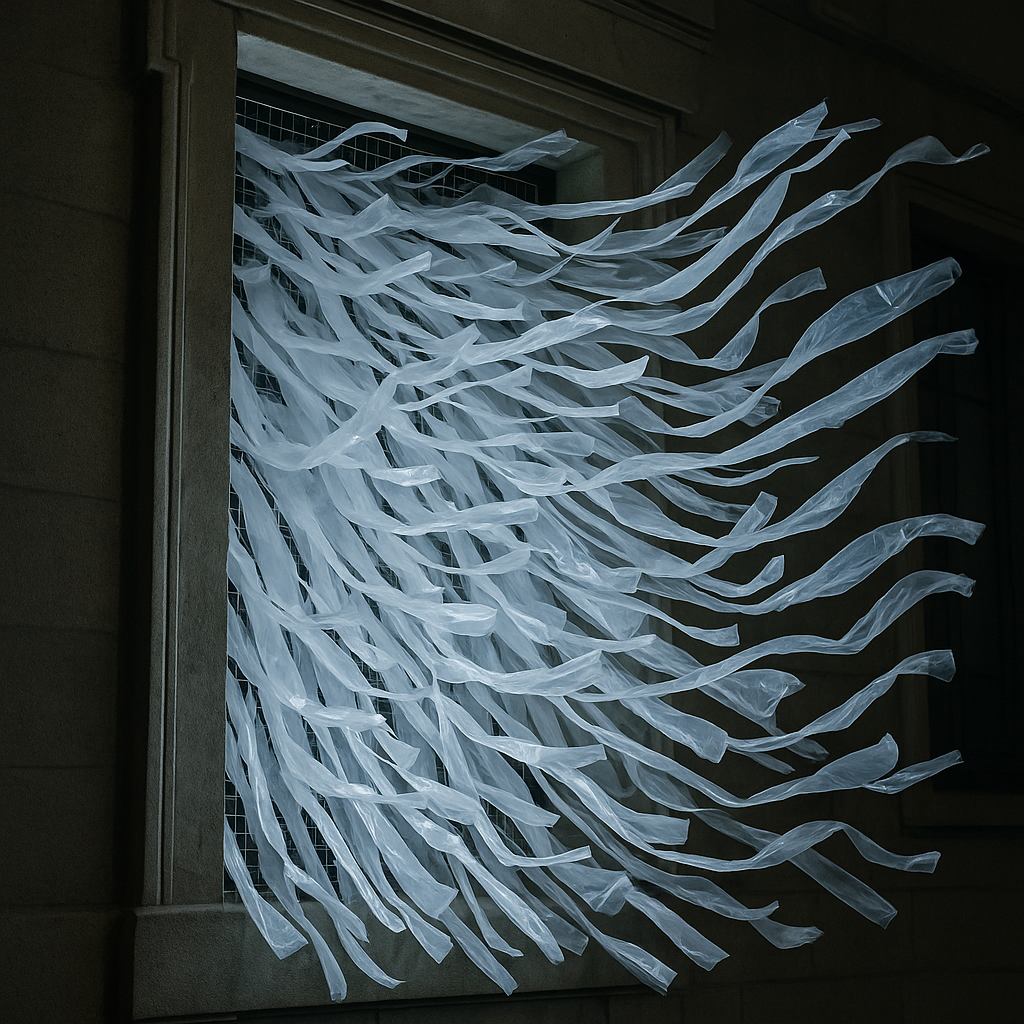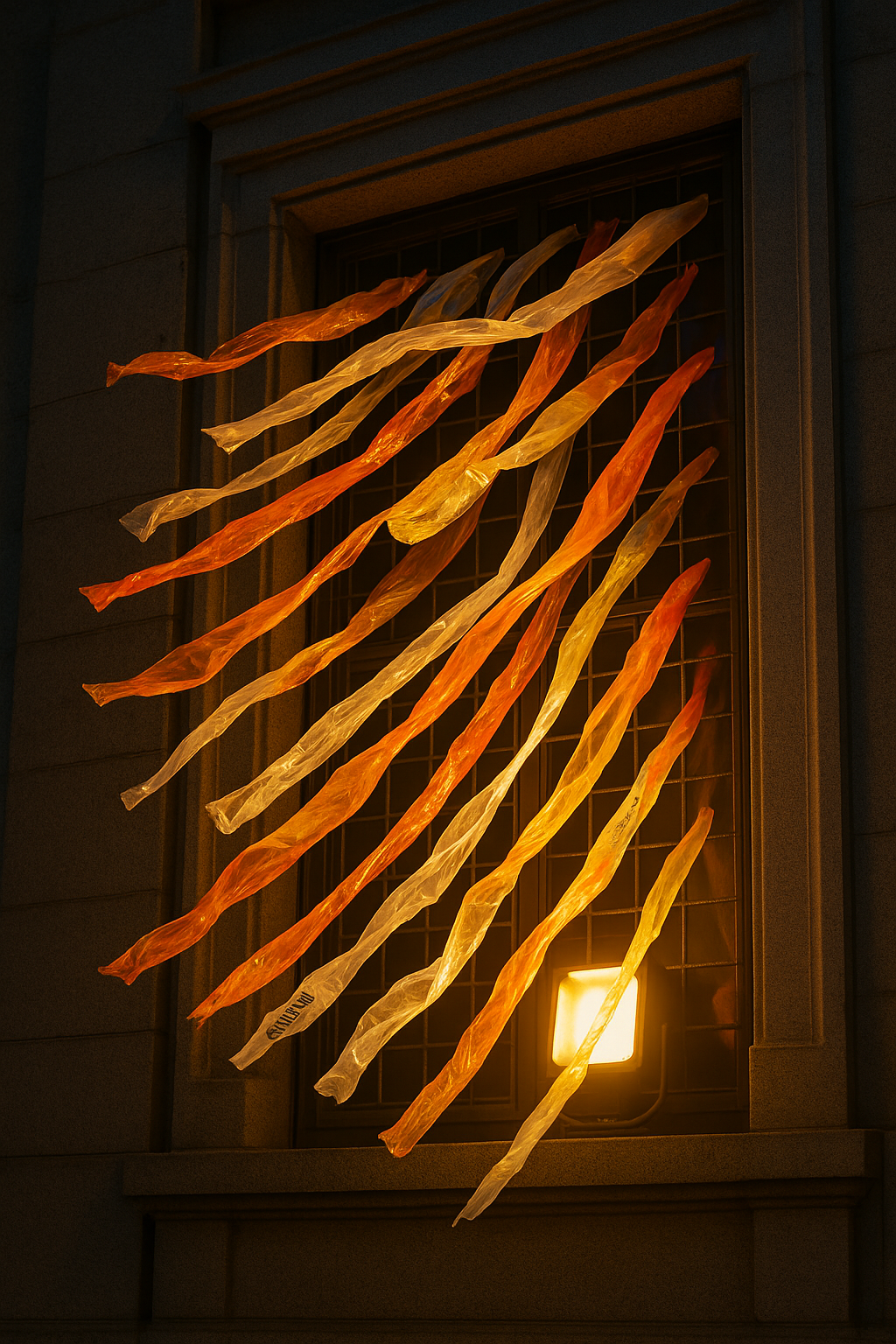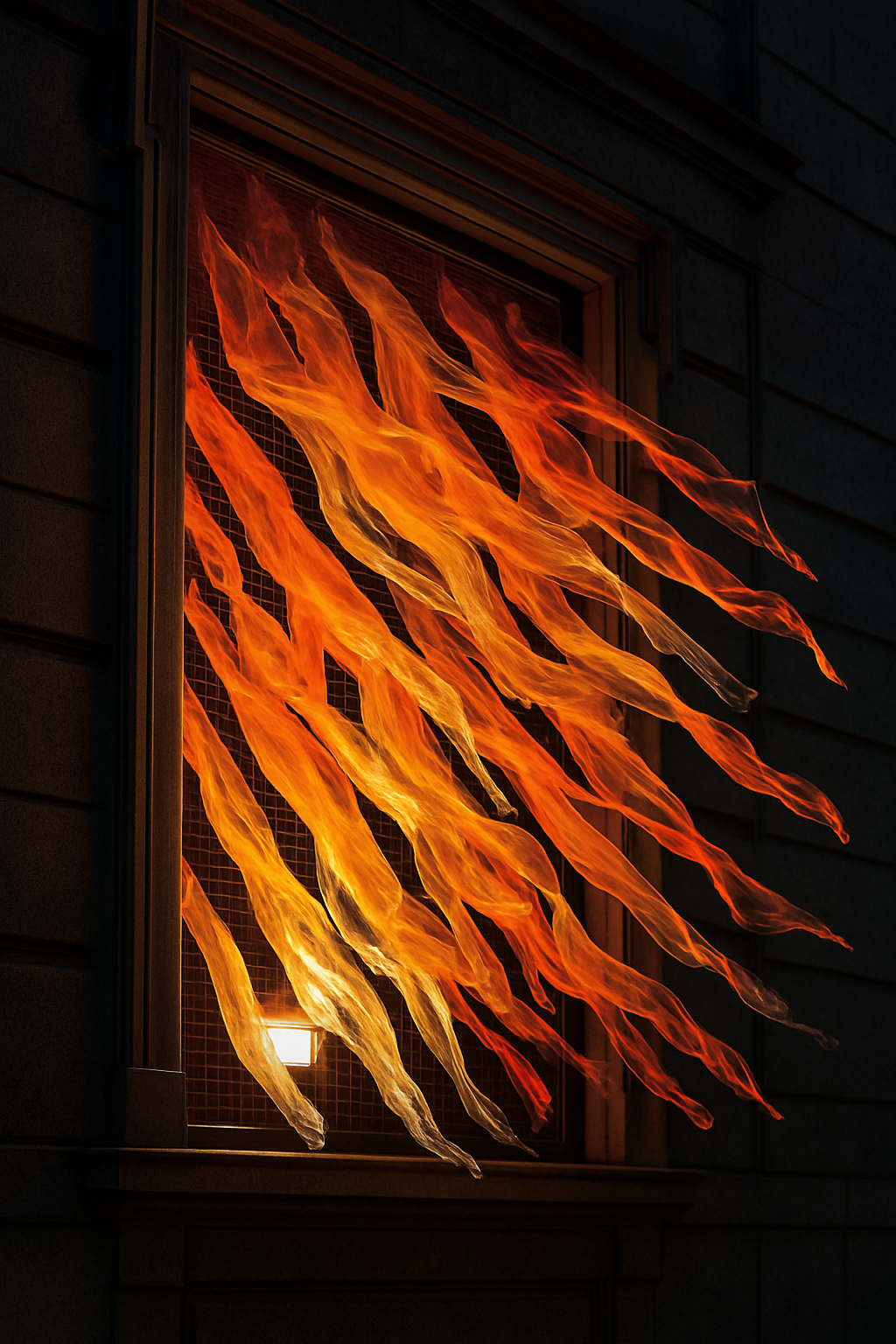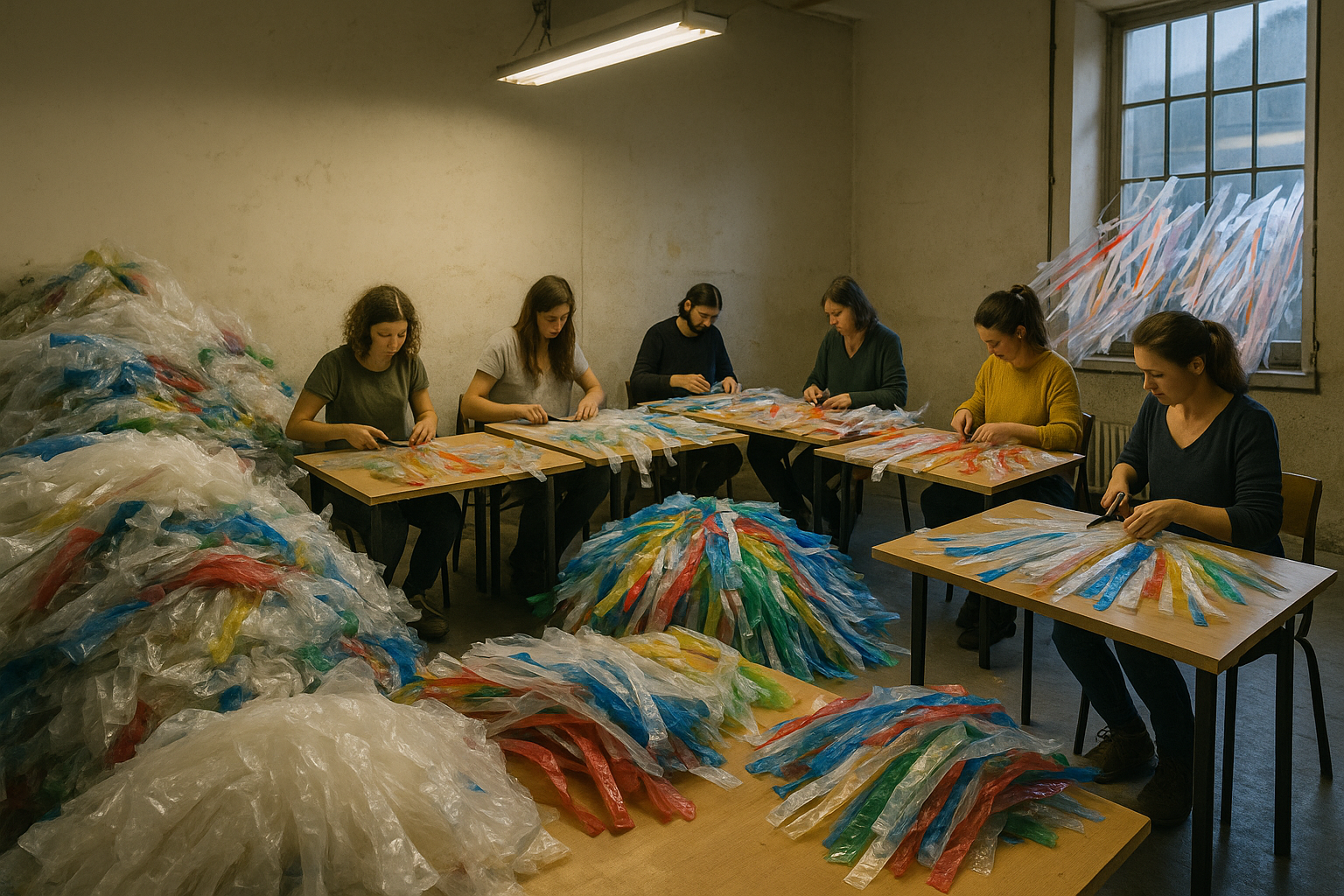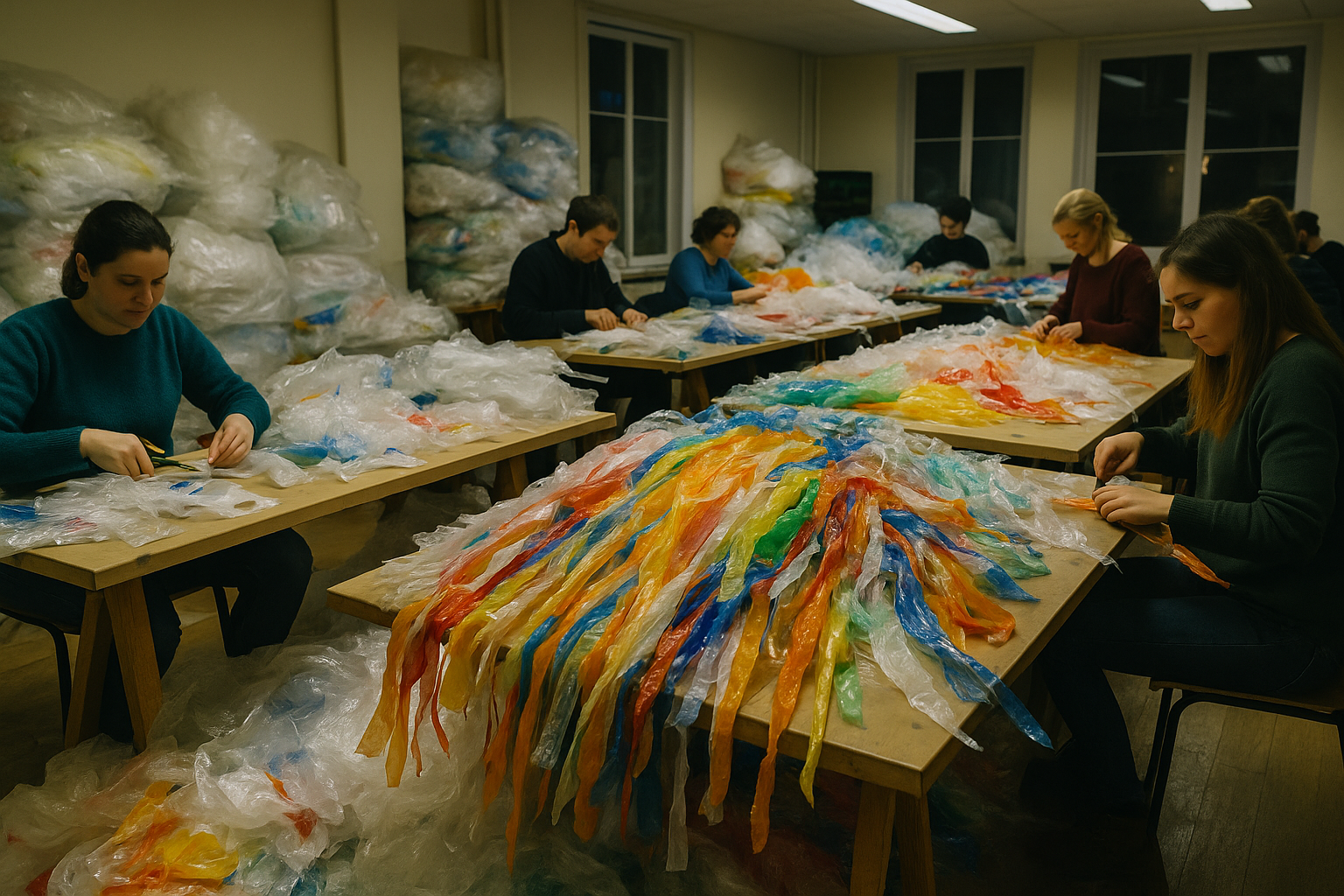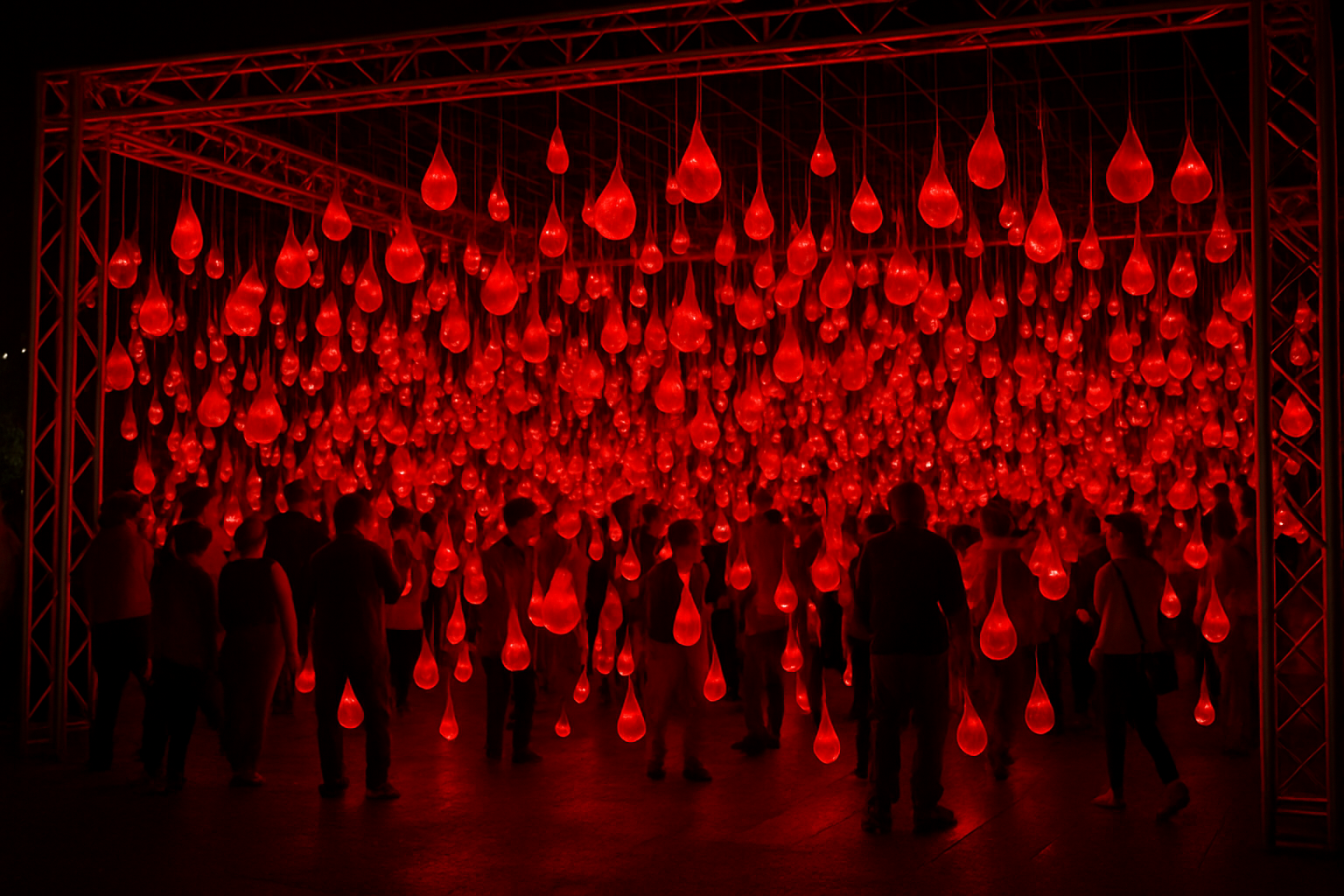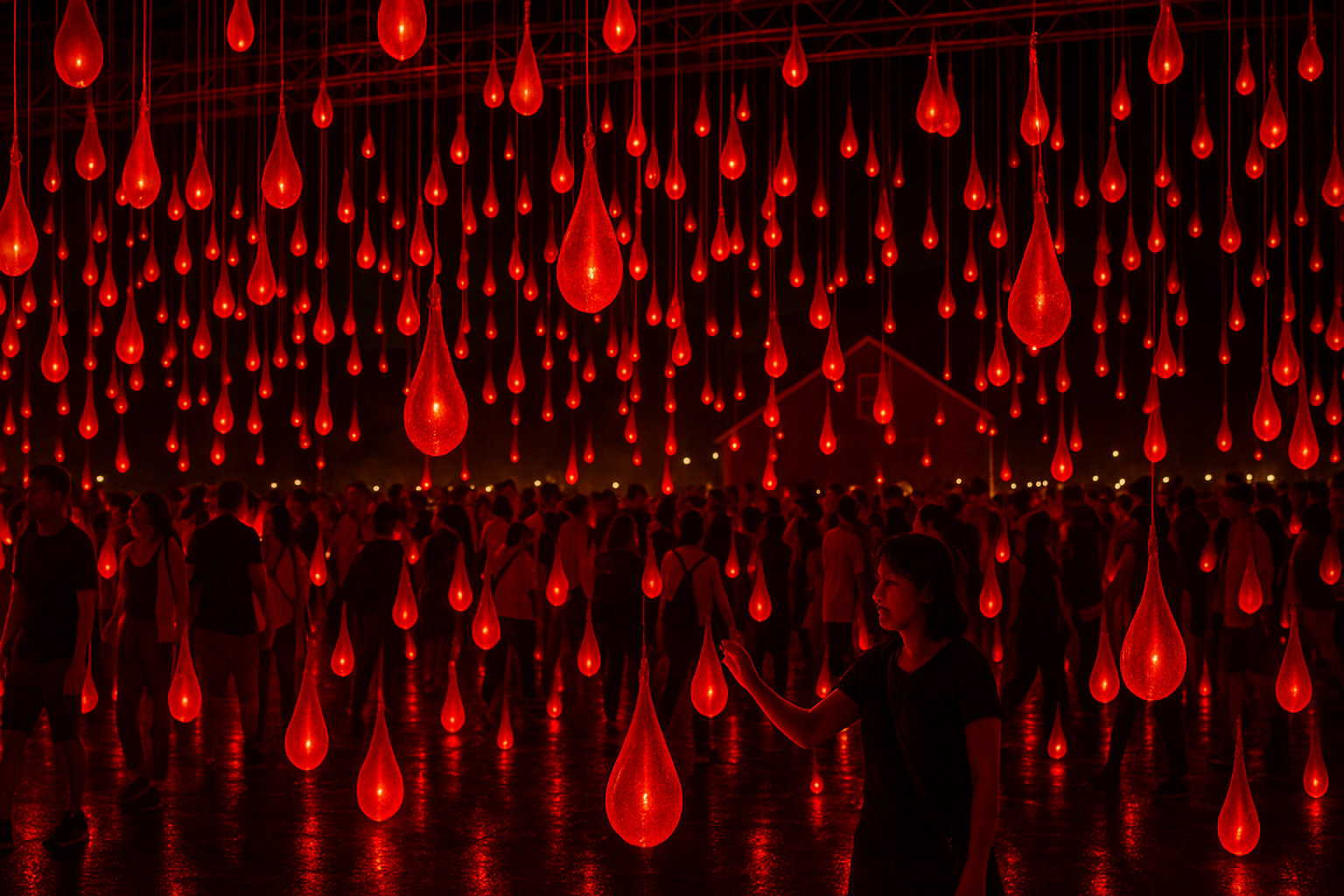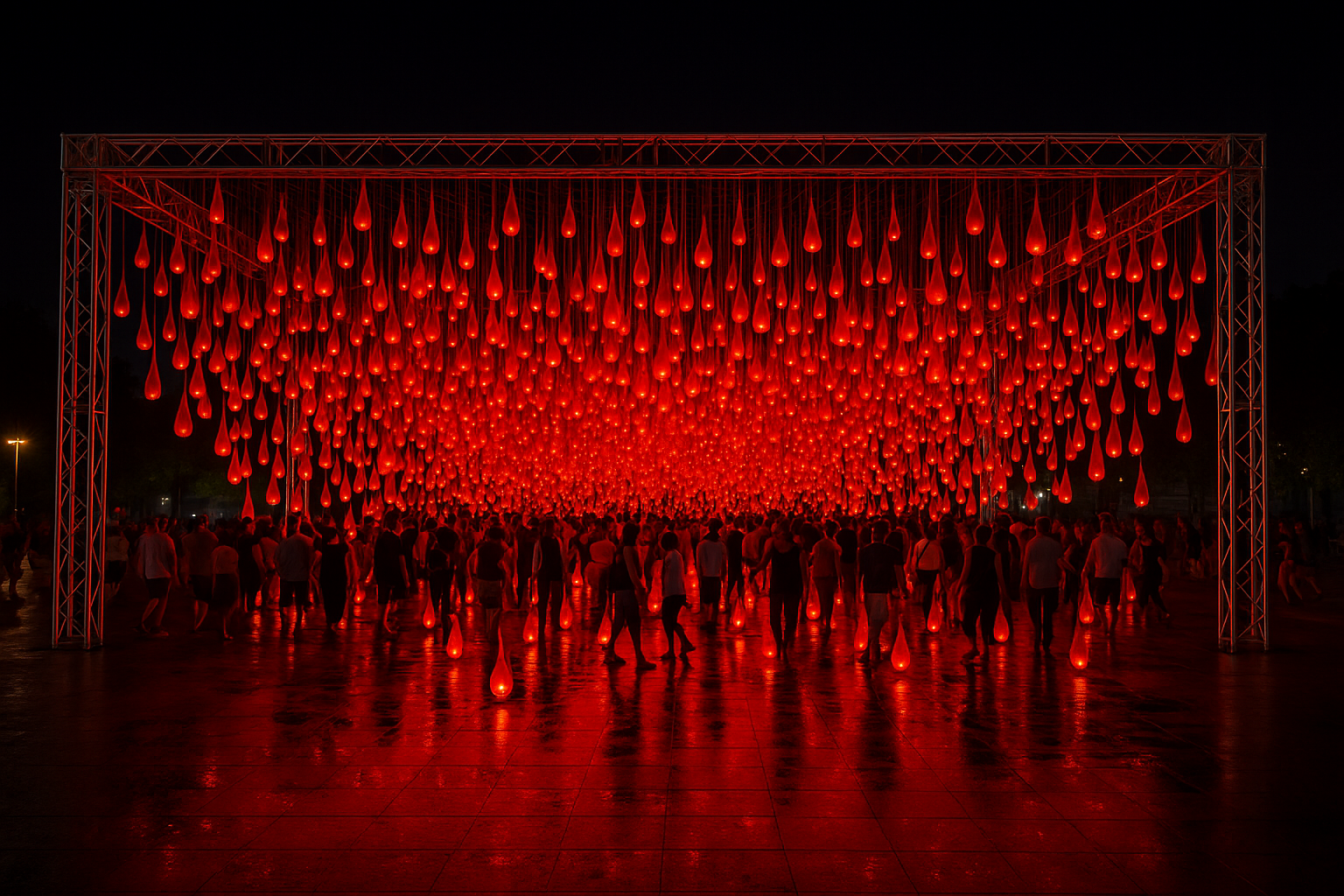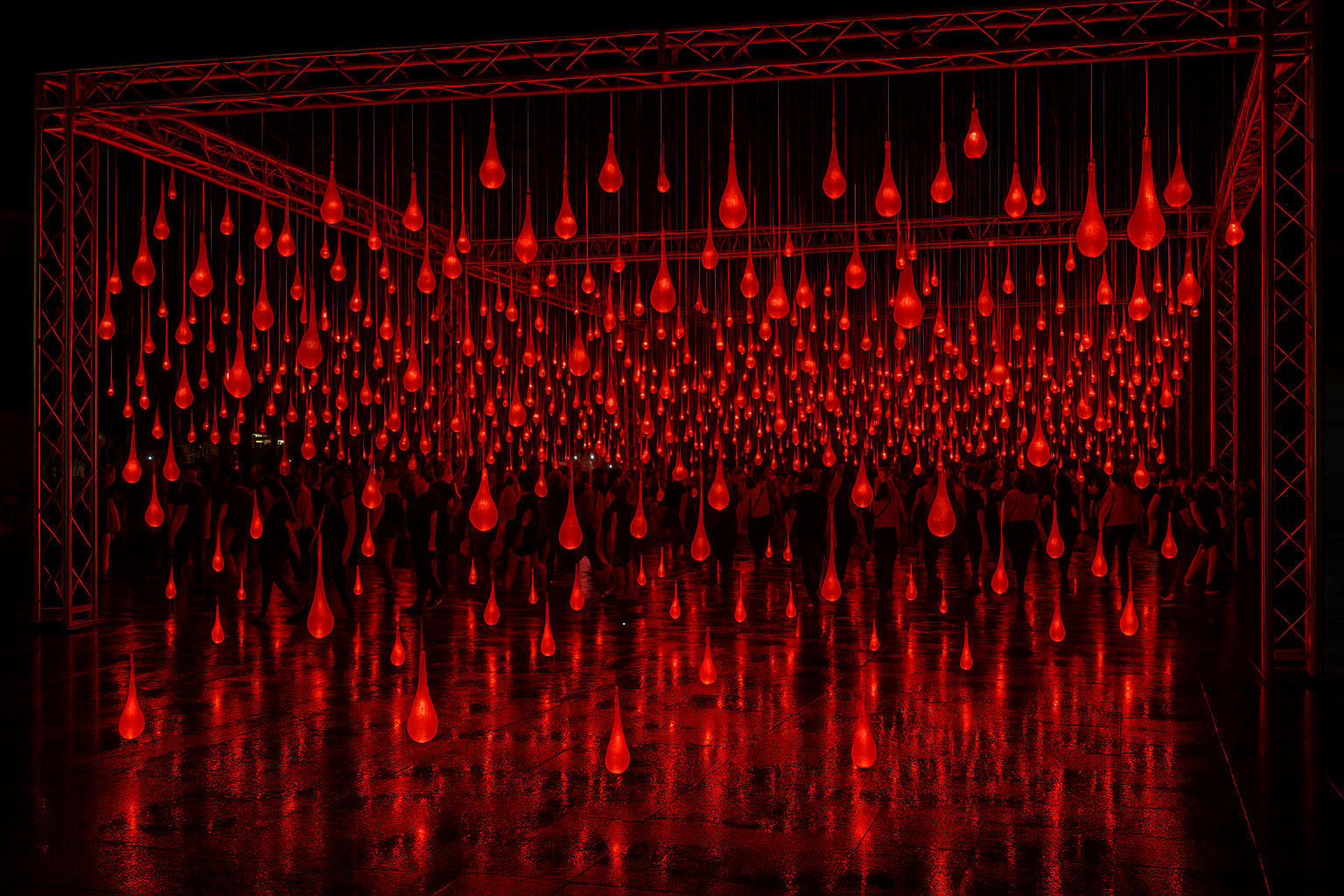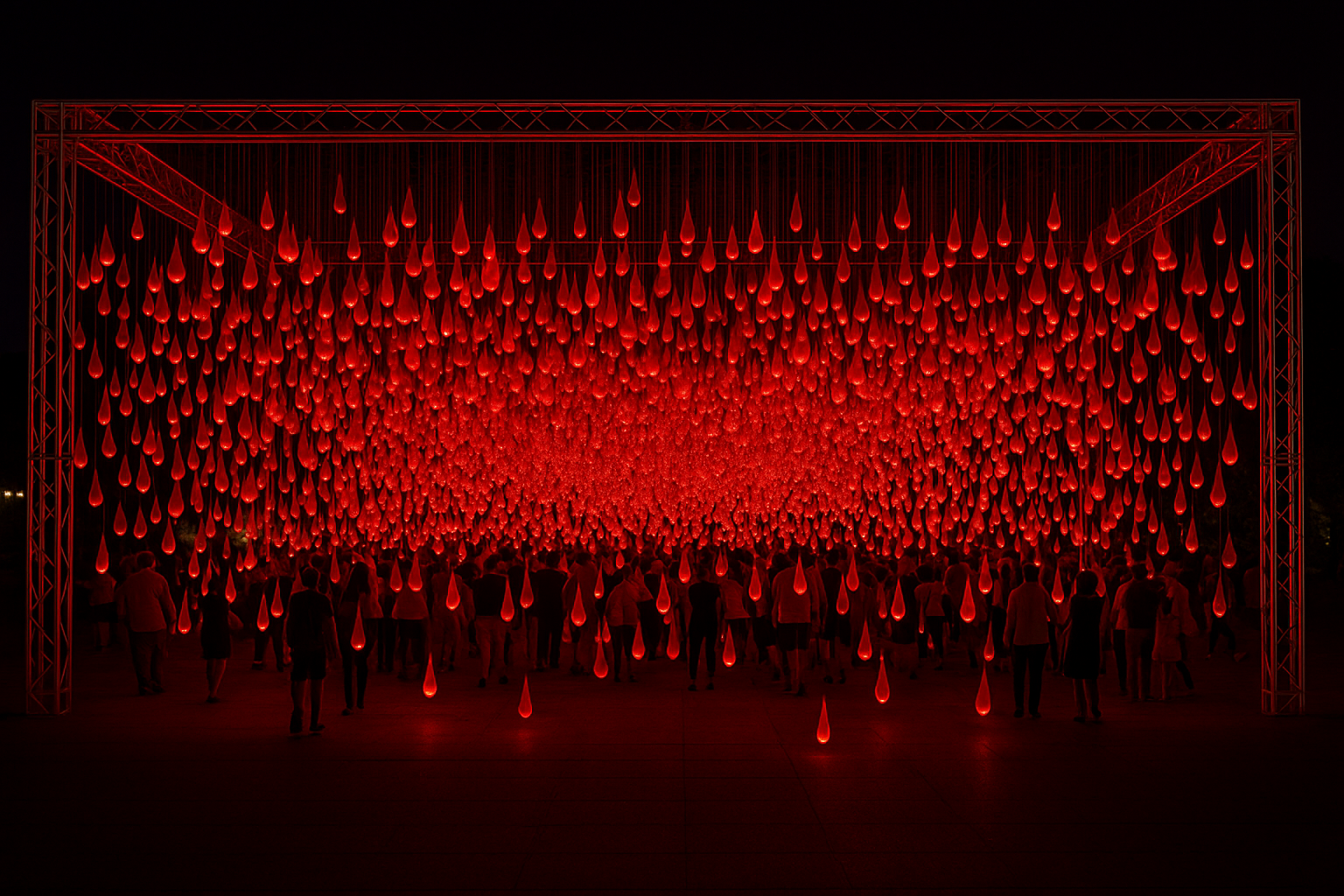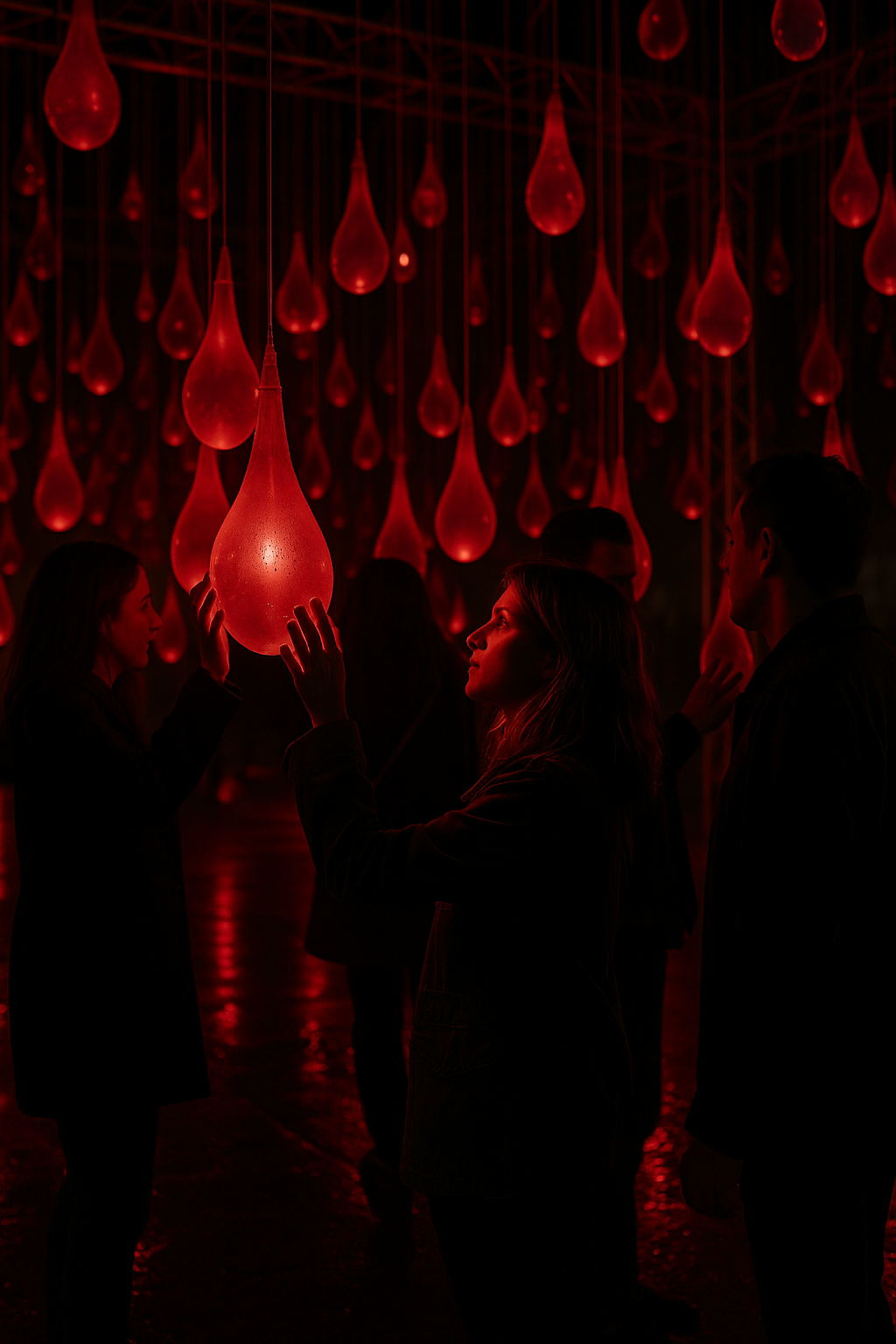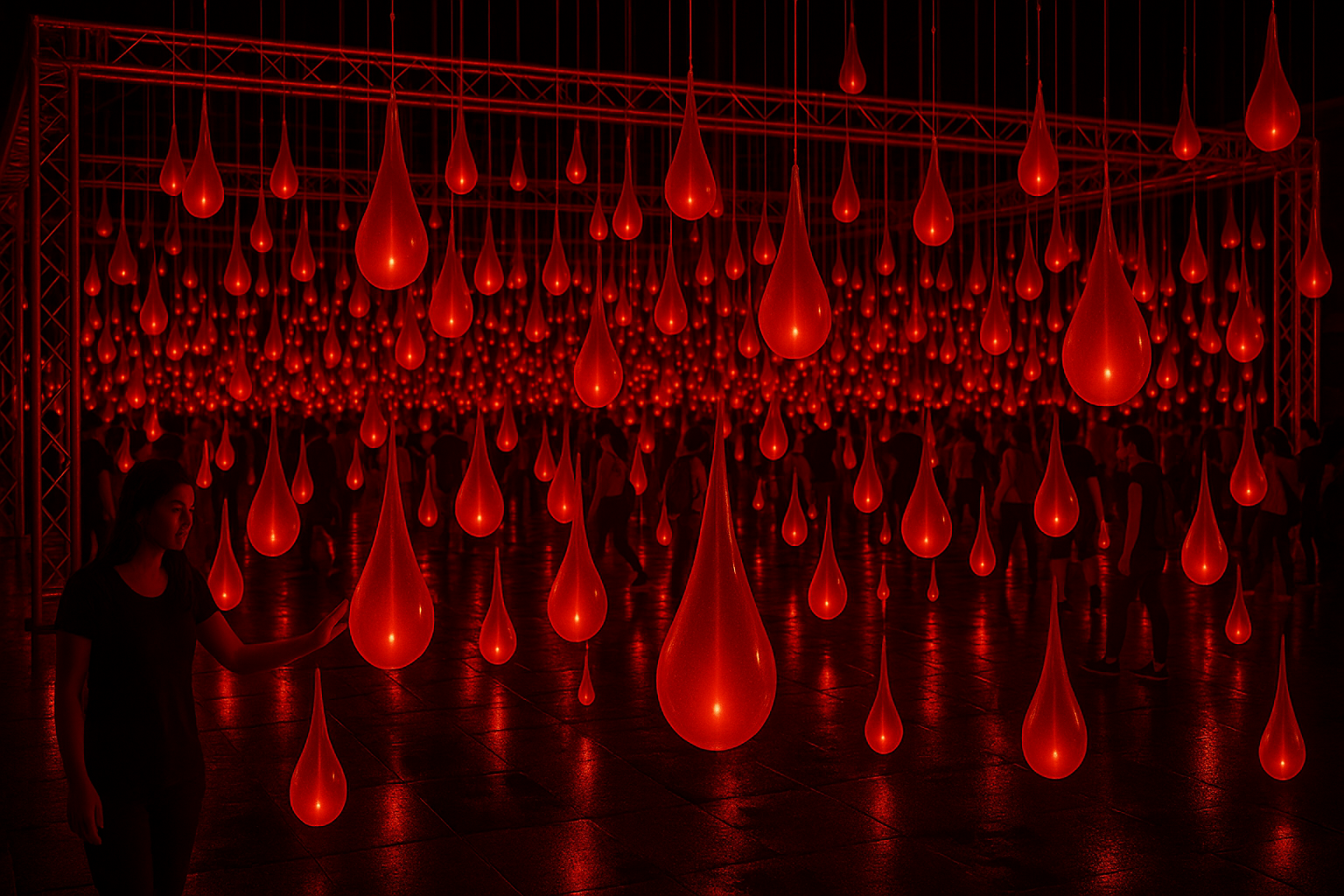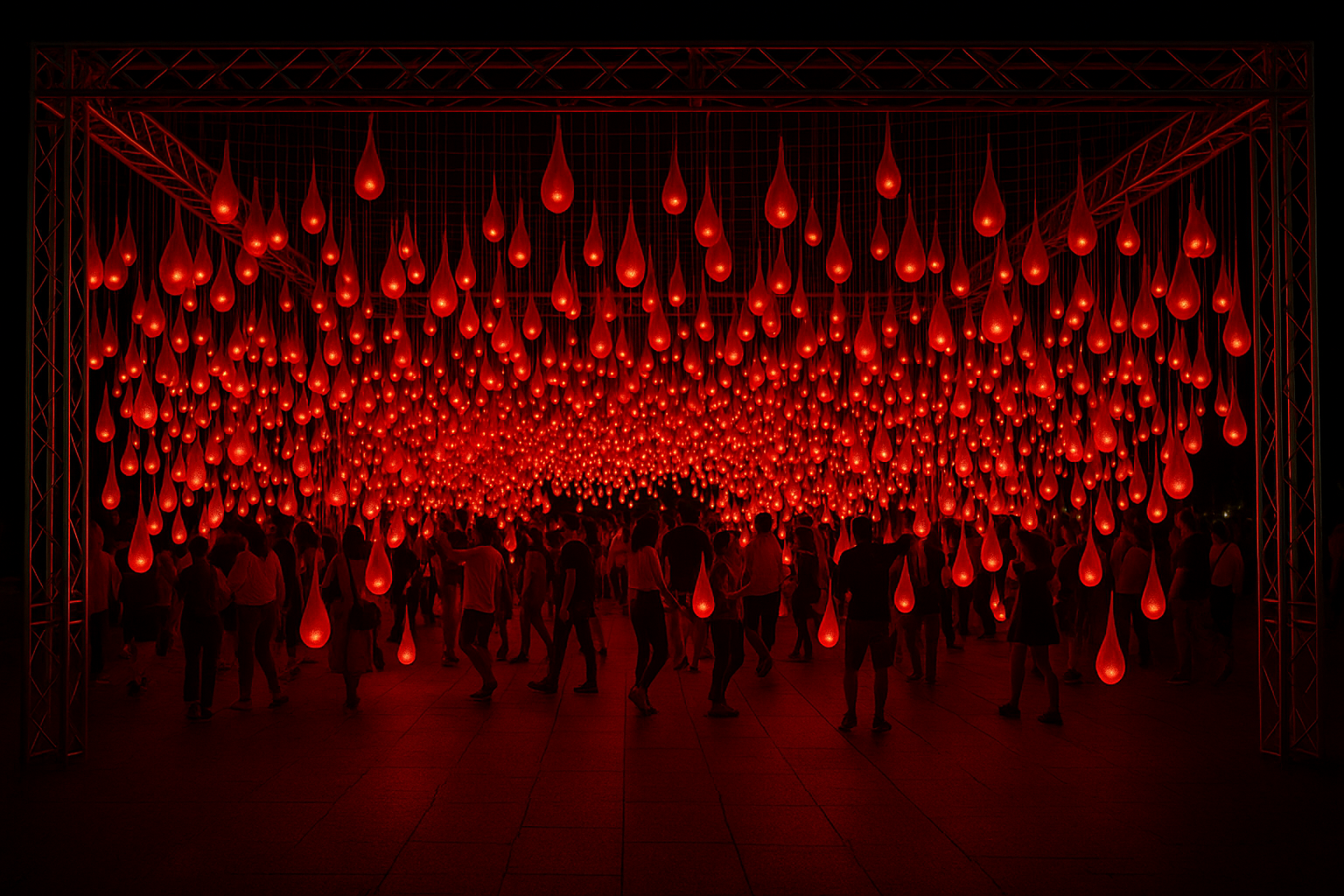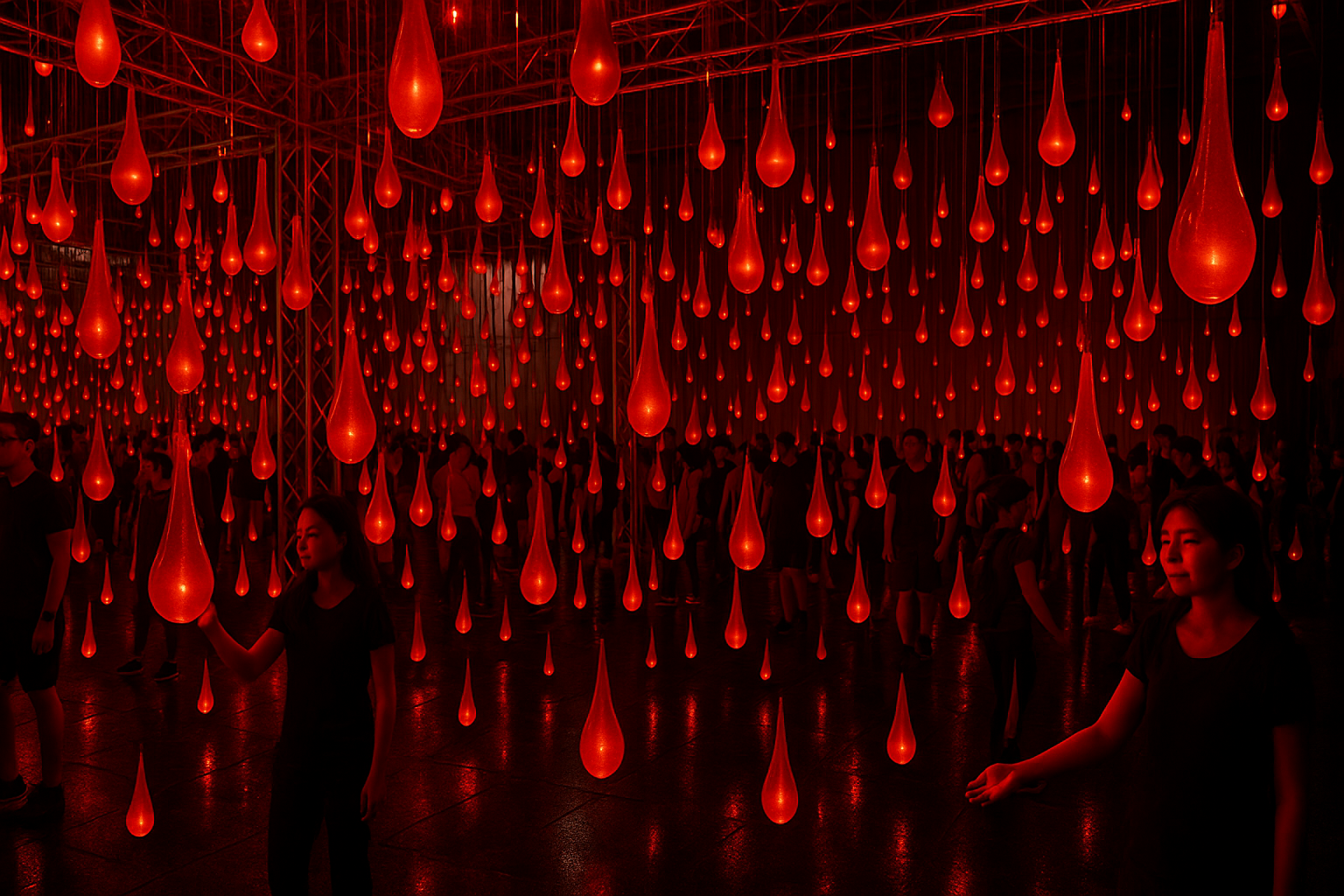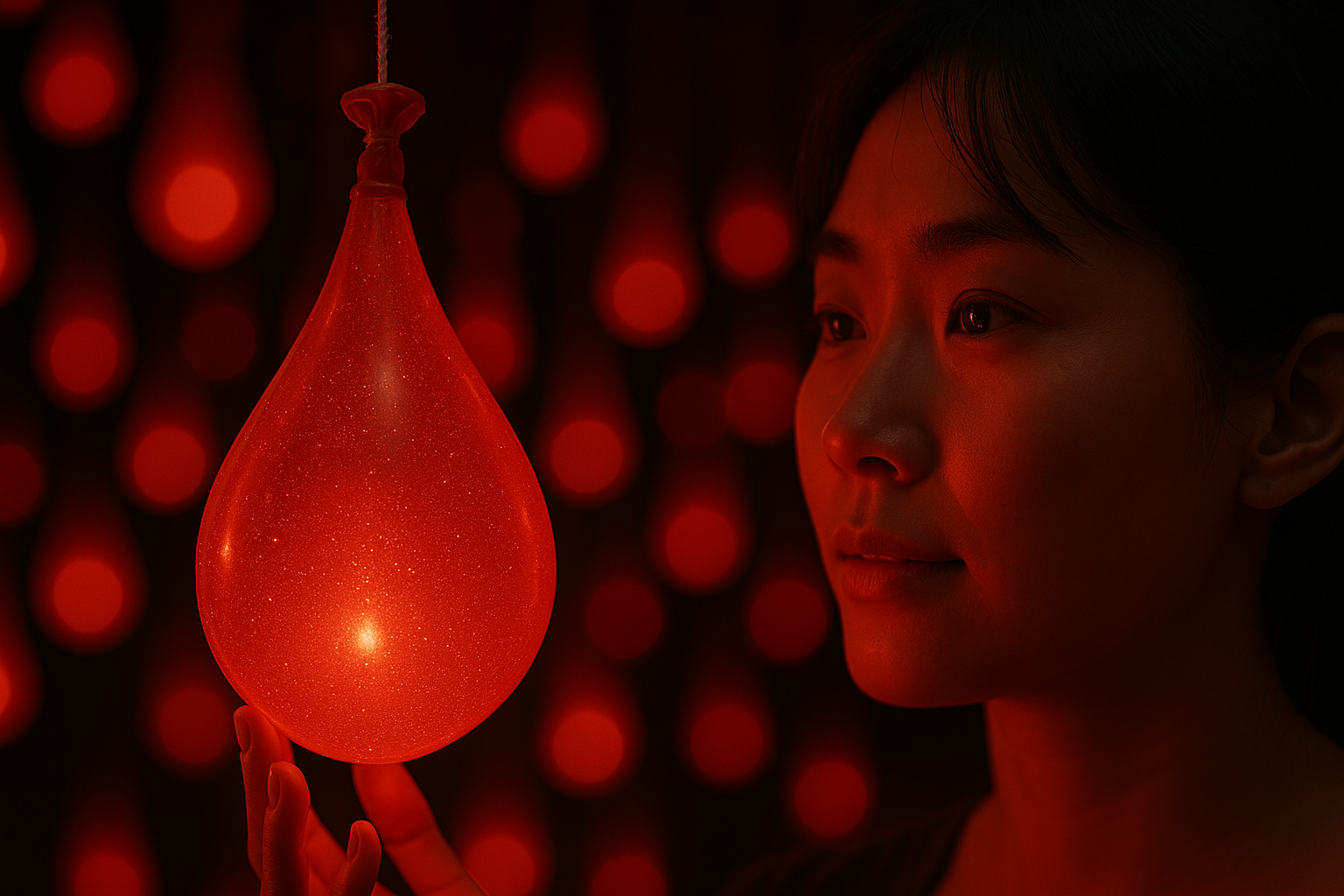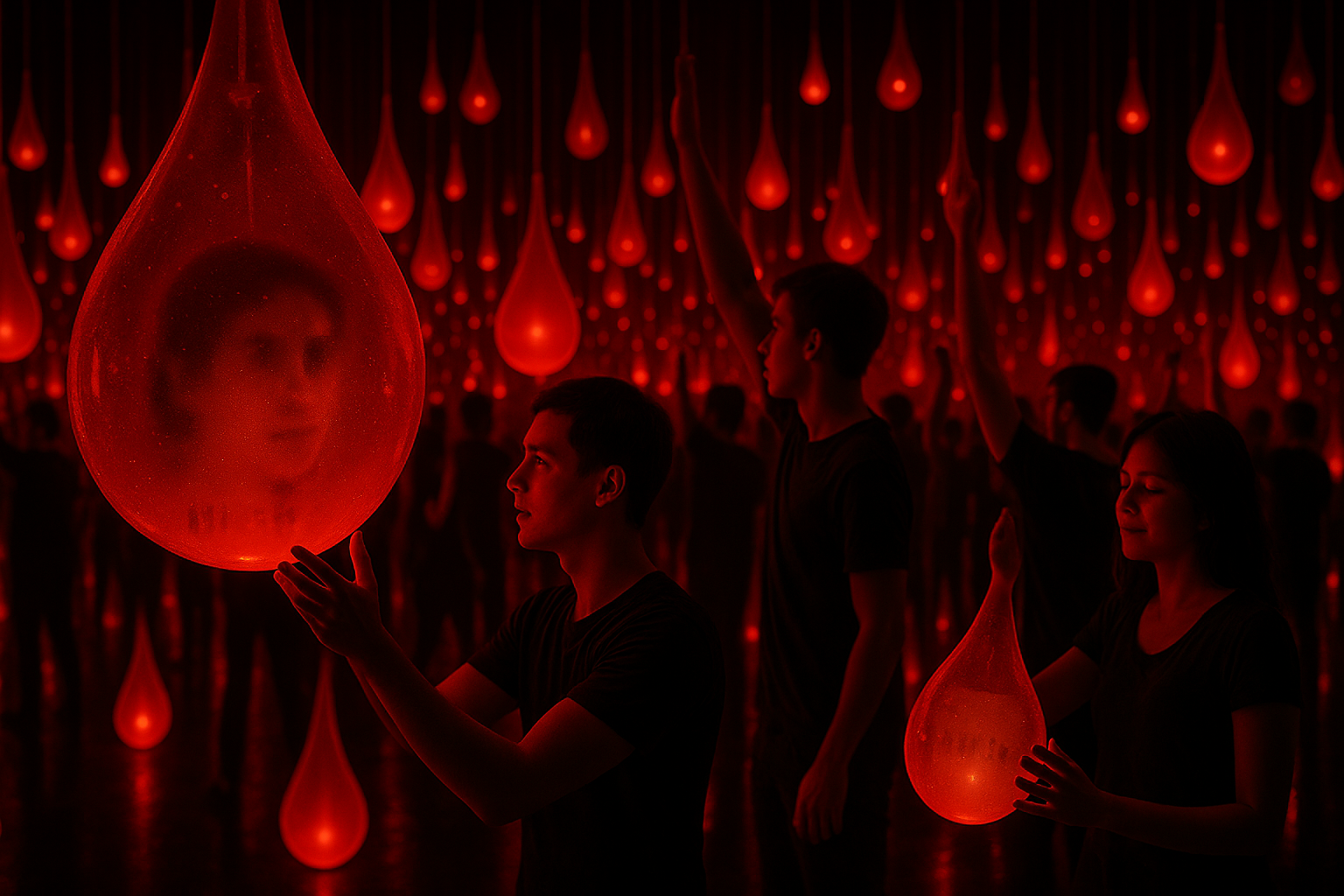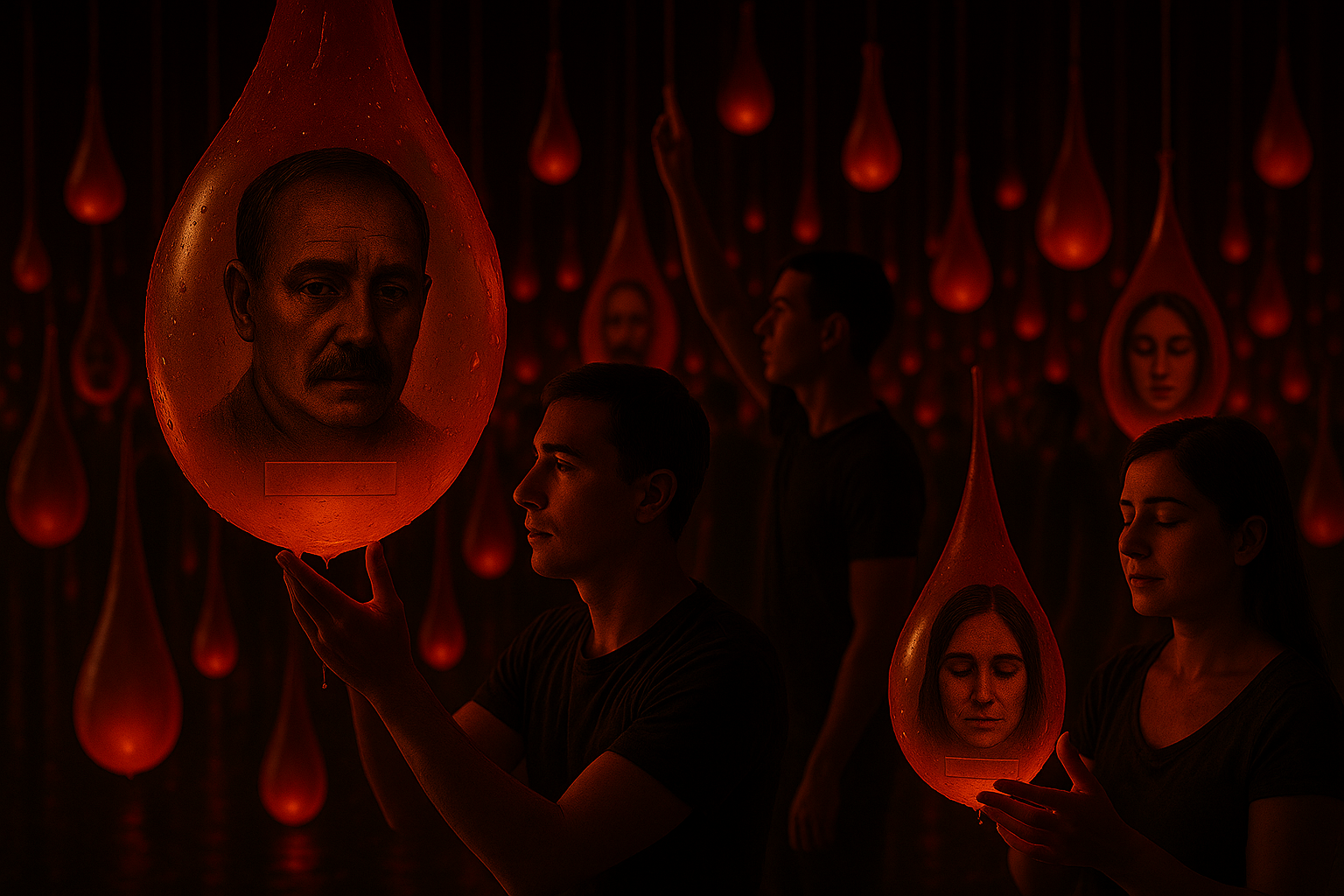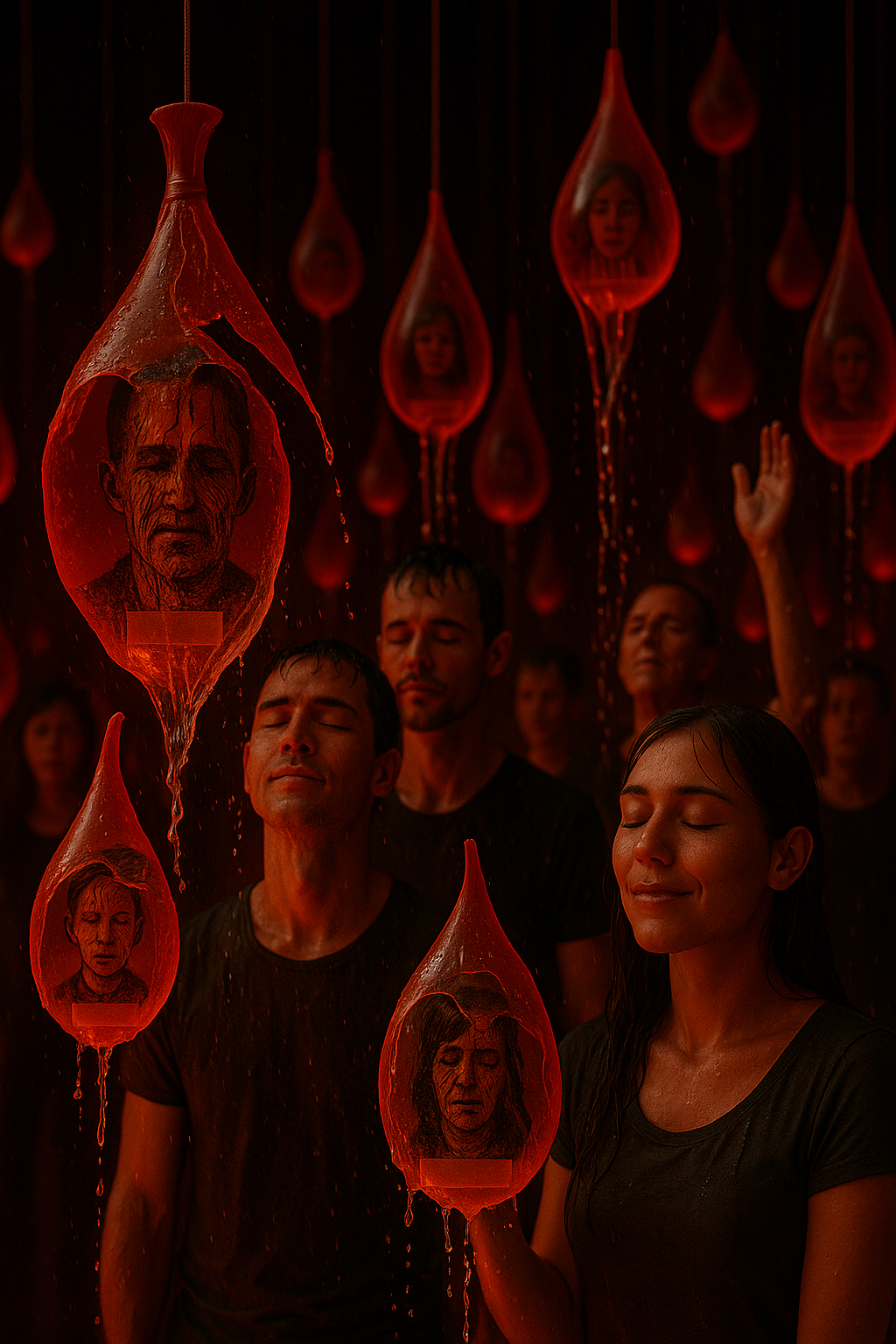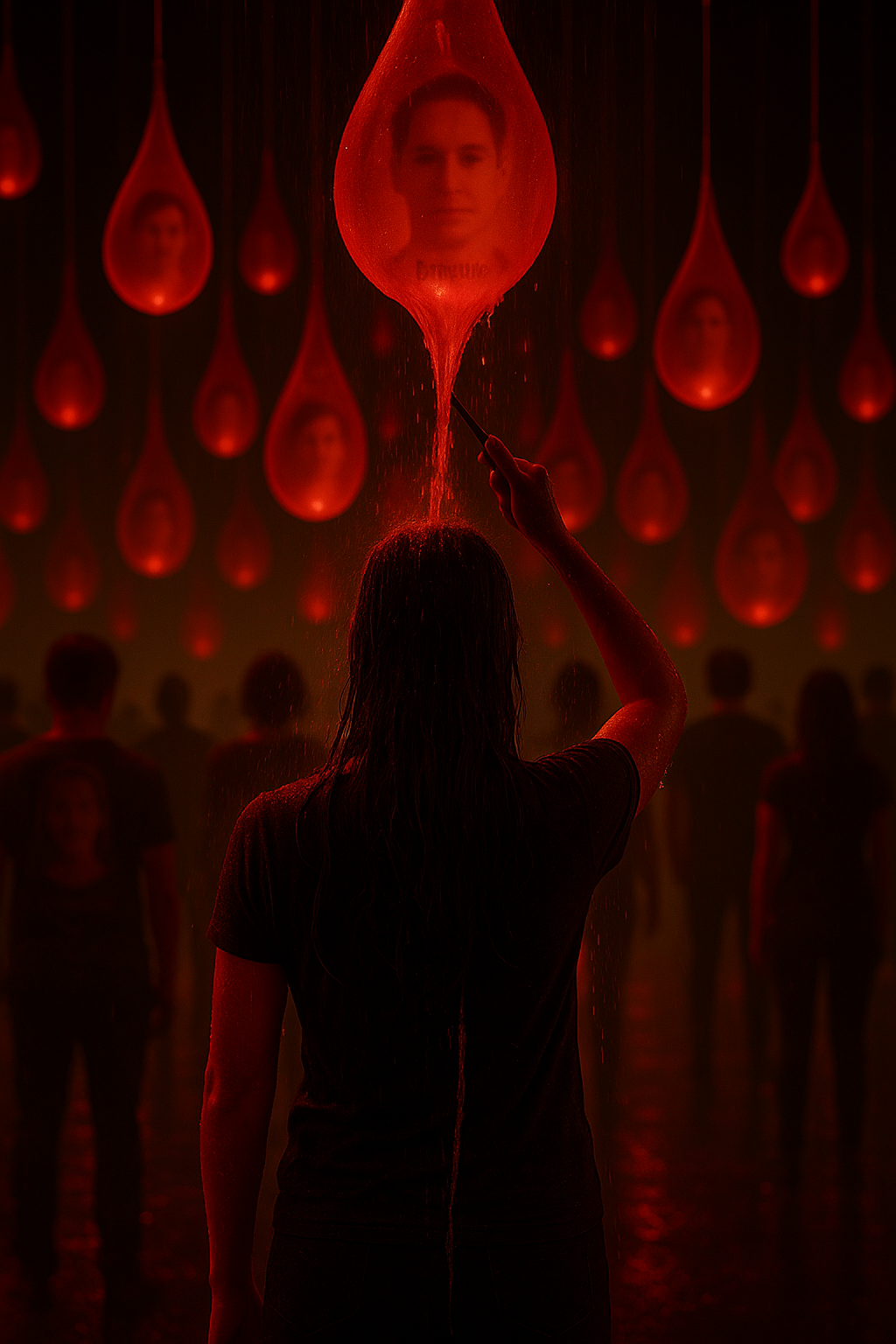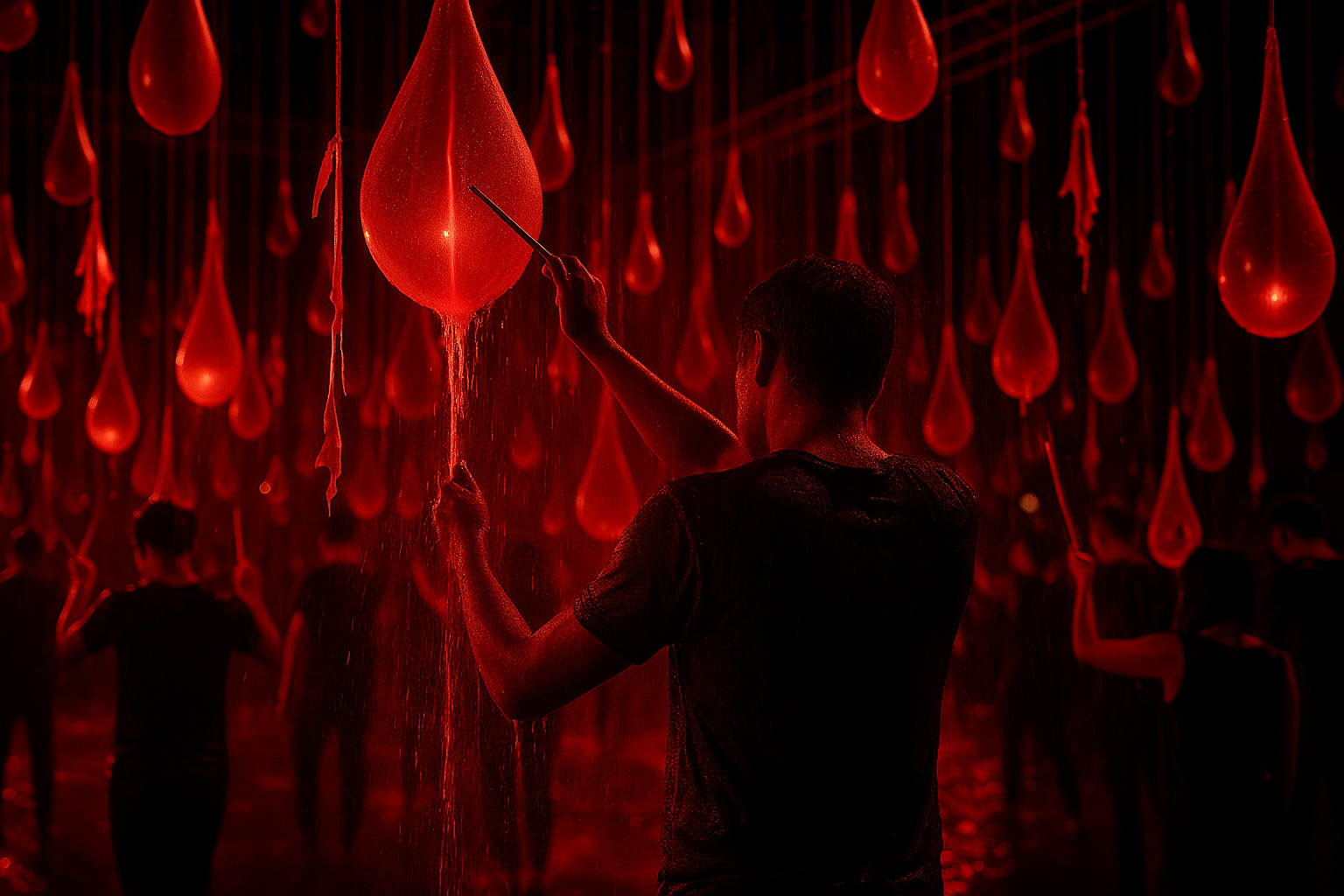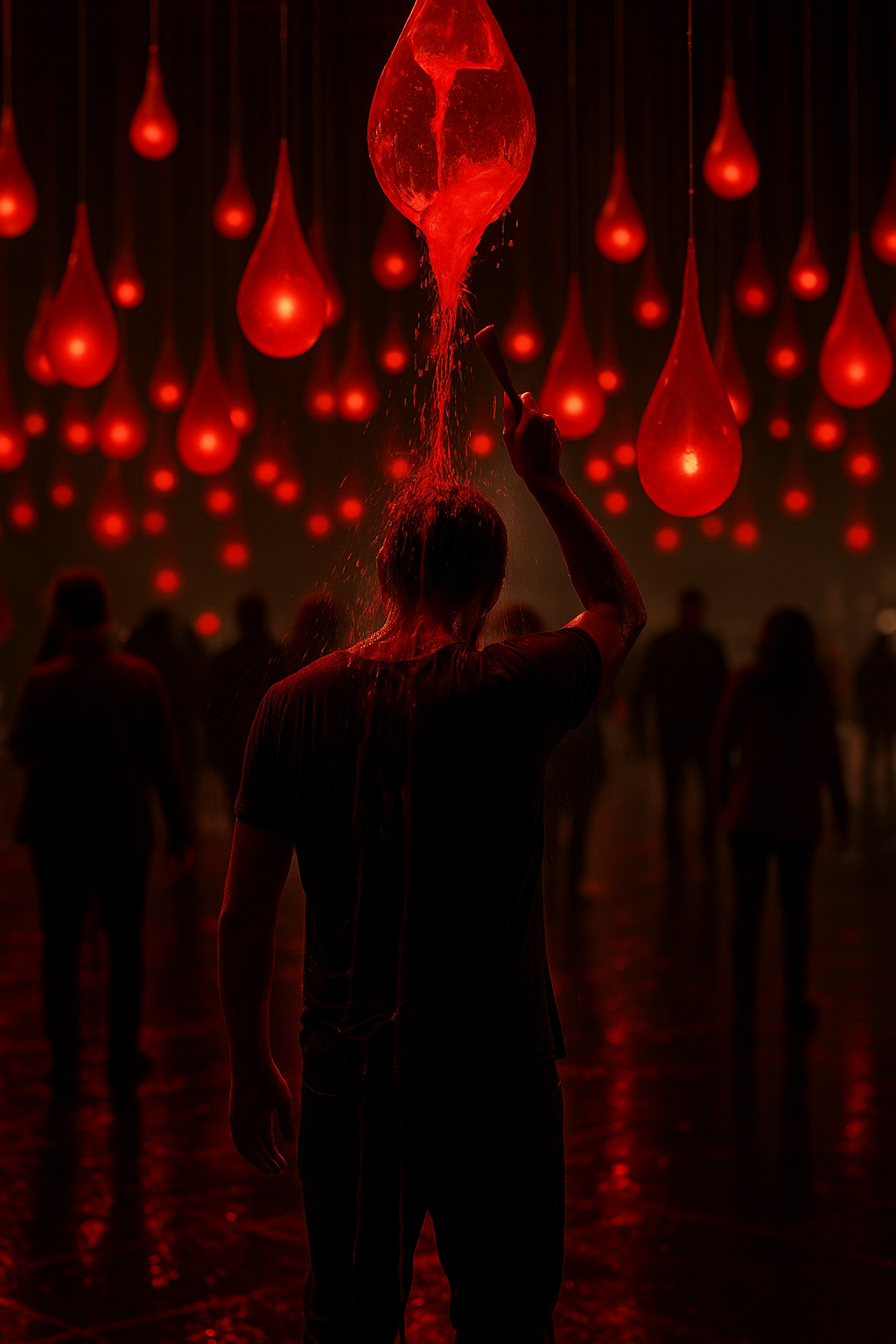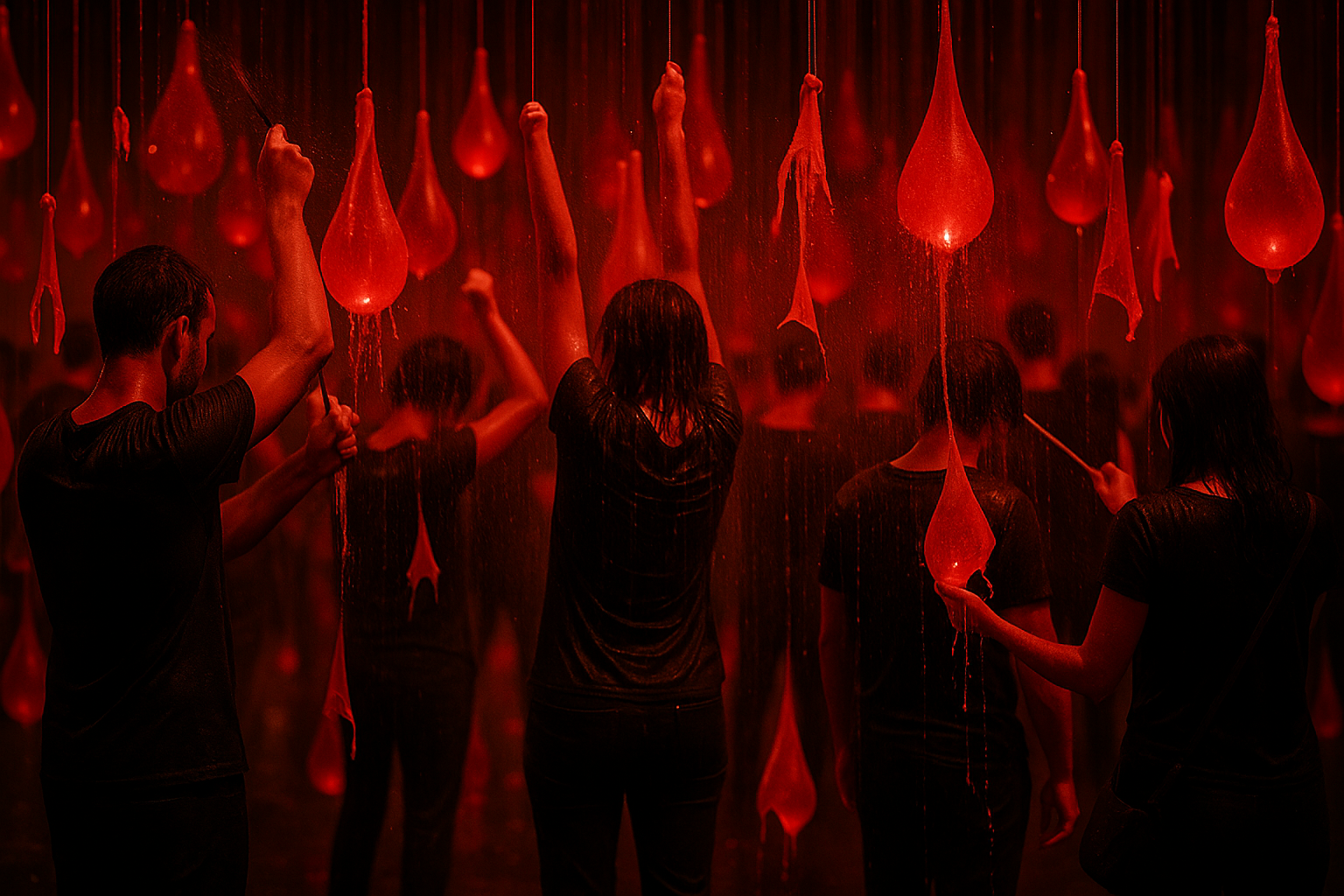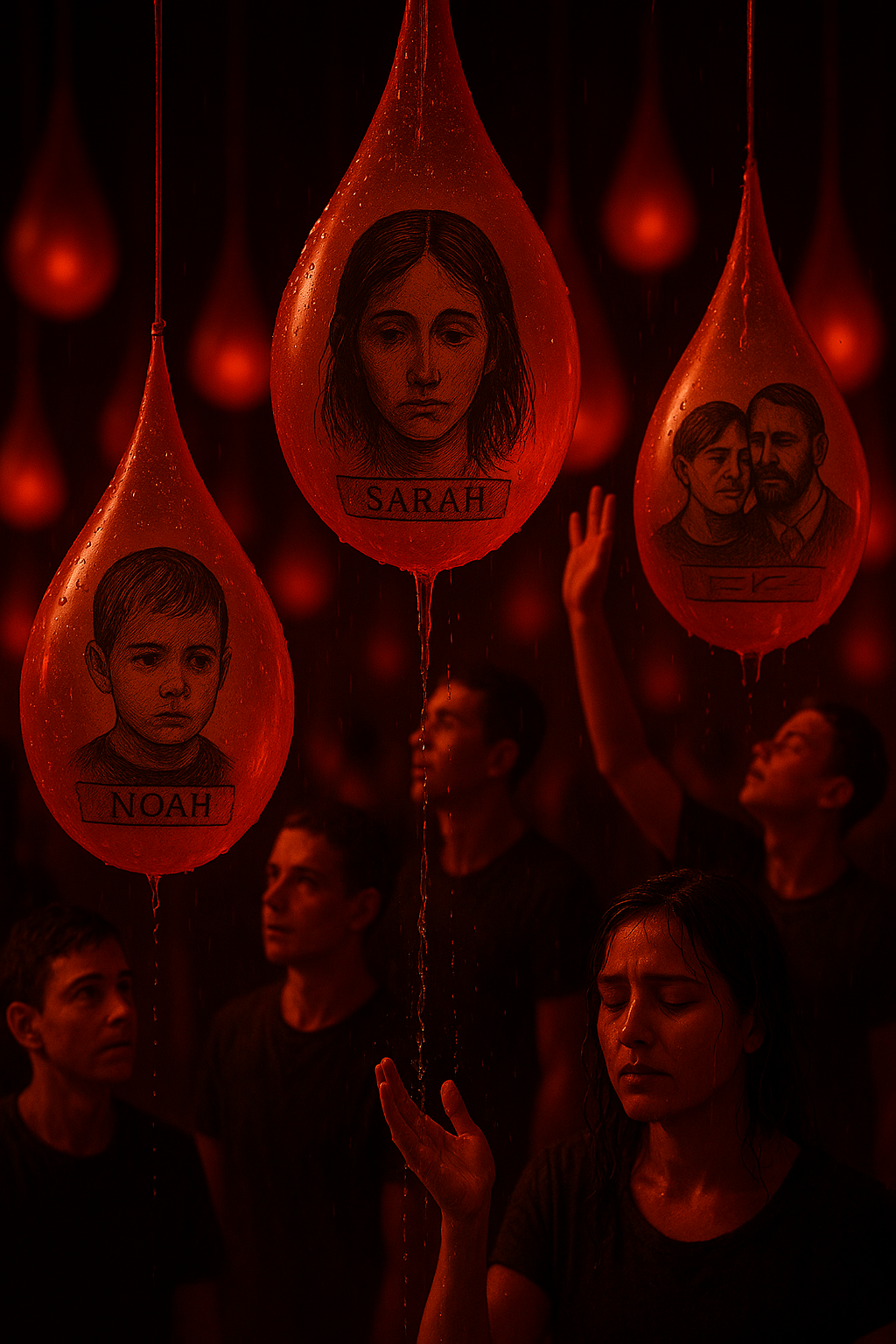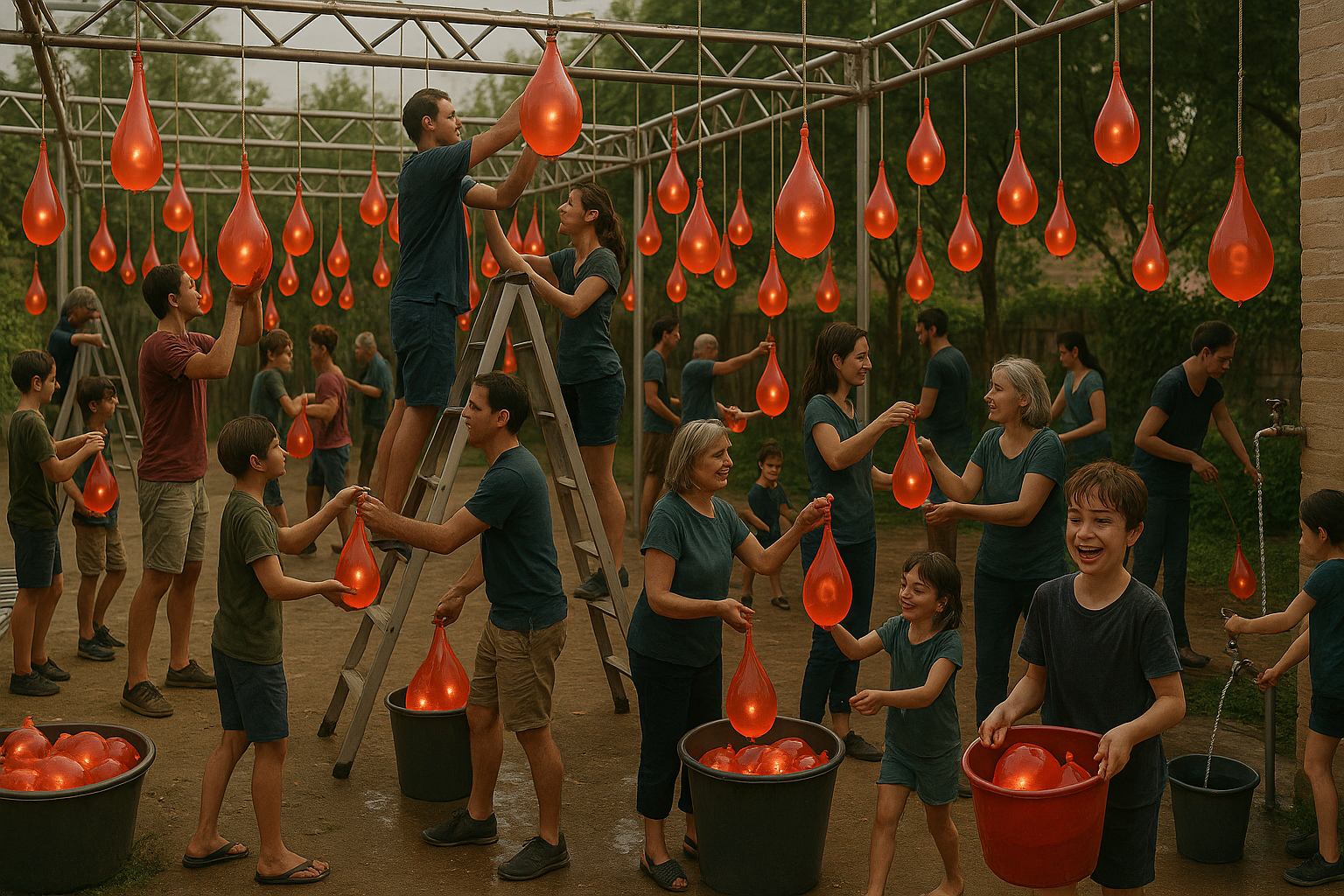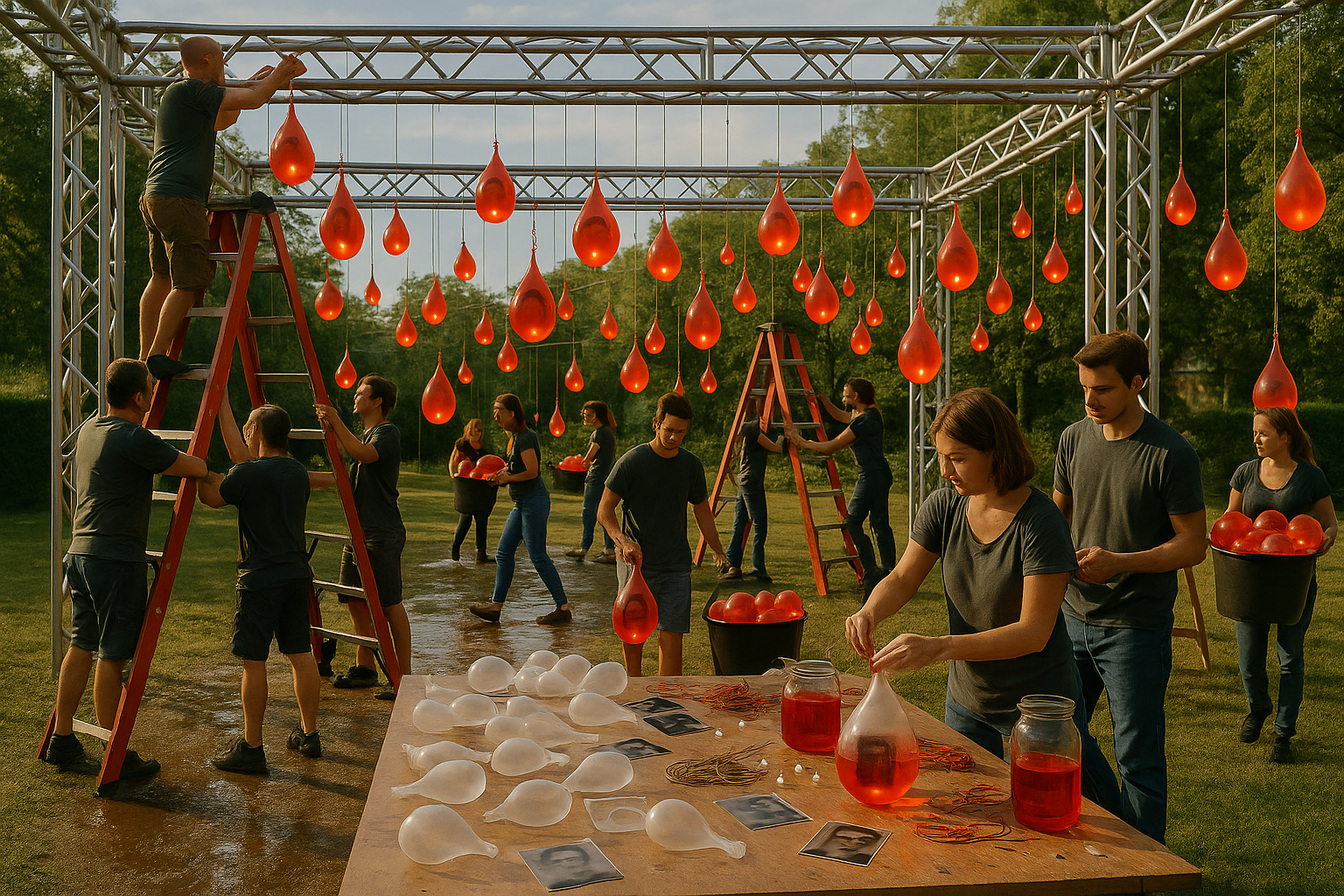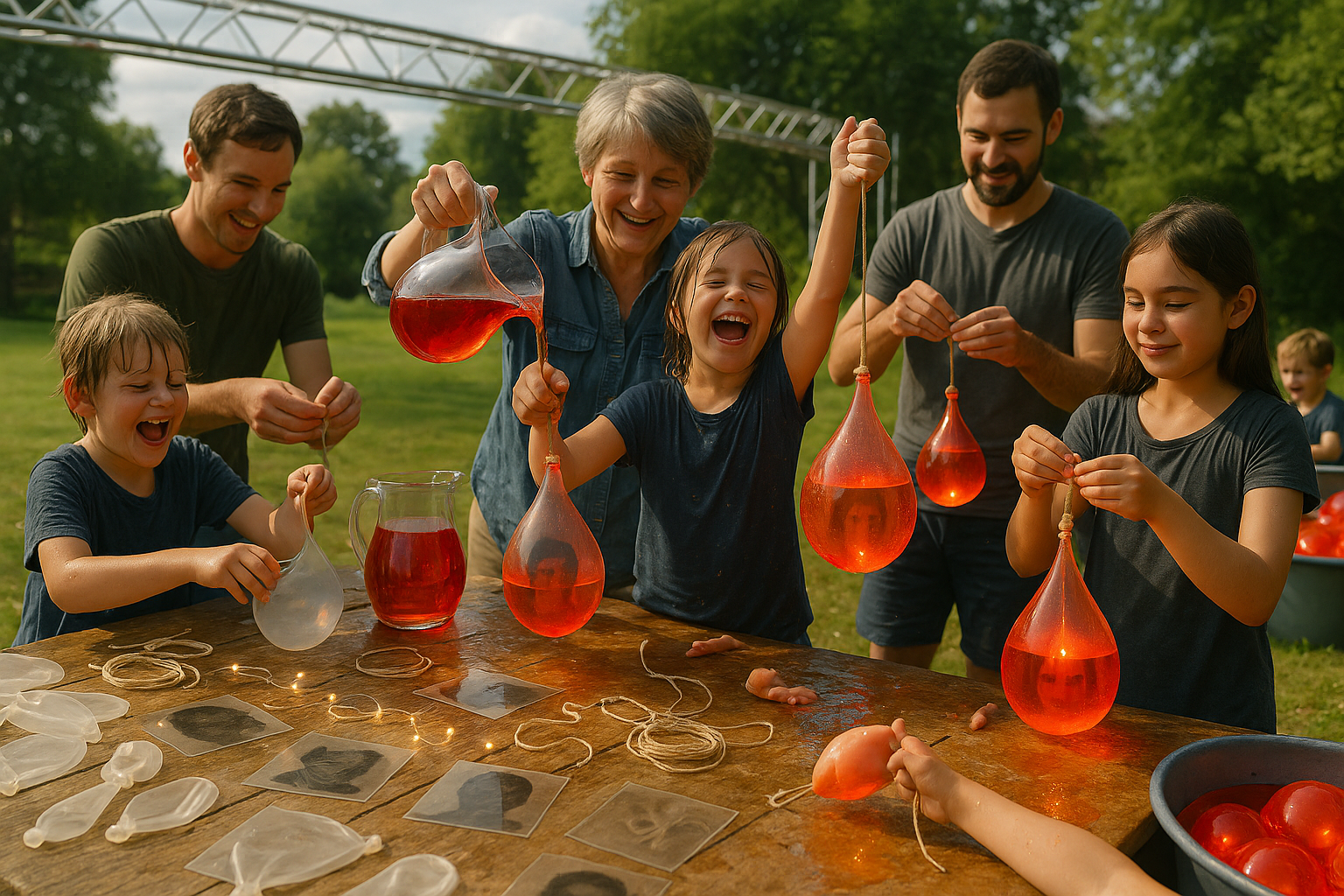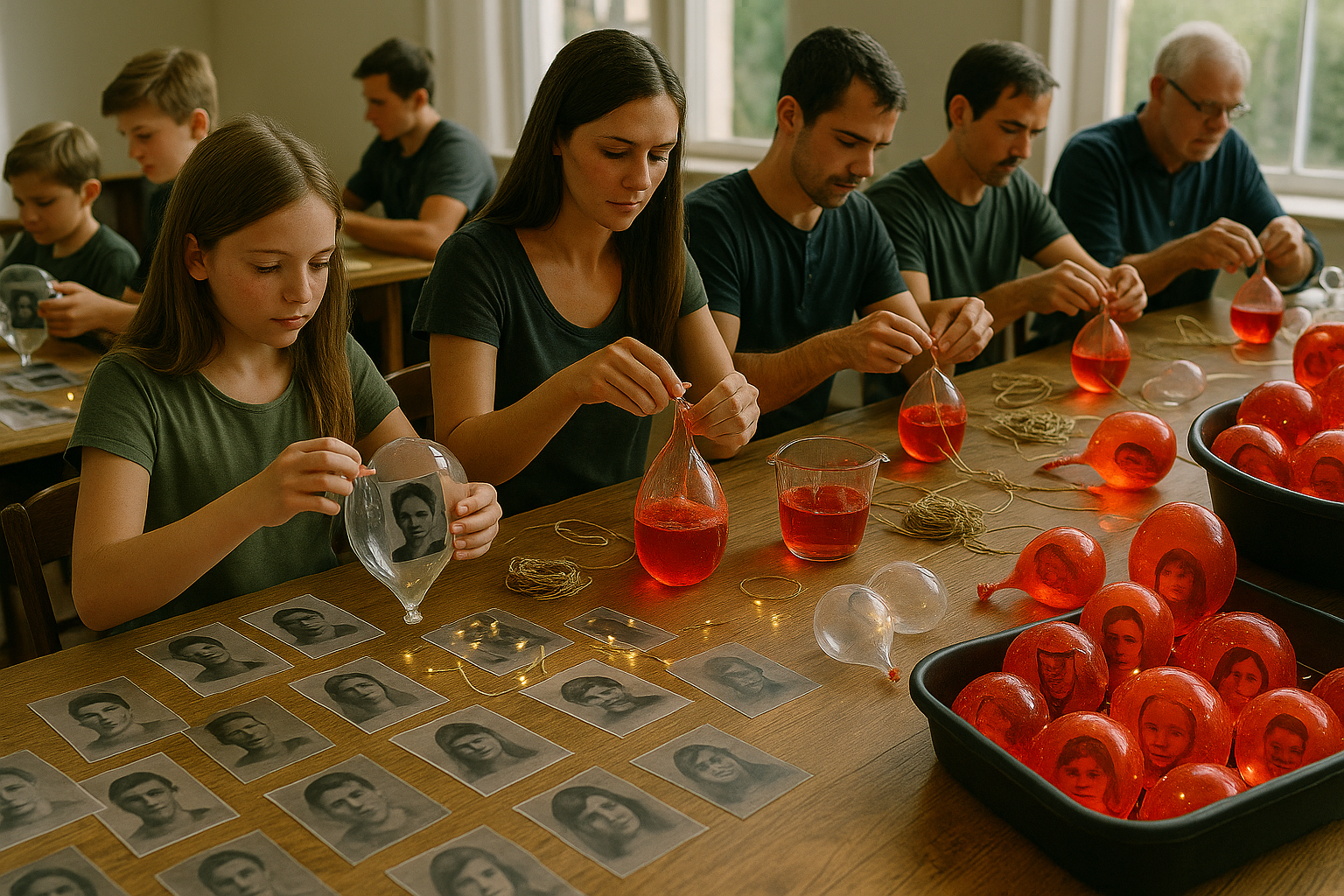10 julio, 2025


















Plastic Gusts is an idea for a light installation on inhabited façades, built with recycled materials and created with the help of the local community. It forms part of our ongoing line of work in which we use plastic as a symbolic material to speak about environmental crisis, consumption, exploitation of the planet’s resources, and overflow.
The piece is a version of an earlier idea titled Plastic Gusts that Occupy the Air, now adapted to the façade of a building. The openings are filled with strips of recycled plastic which, stirred by fans placed inside the building, burst out into the street in a hypnotic motion, accompanied by the eerie rustle of plastic. The building appears to breathe out waste.
The atmosphere of the installation shifts depending on the chosen light. With cold white light, the plastic gusts move like icy air currents erupting from within. This effect seeks to visualize the sheer amount of plastic we consume and expel without pause, as though it were part of our everyday breathing.
With red light, on the other hand, the building seems to be on fire. The windows glow as if engulfed in flames, though what burns here is not fire, but trash: plastic waste derived from petroleum, which we accumulate and try to erase in recycling plants that can no longer keep up. Plastic, a fossil material turned into residue, becomes a powerful image directly linked to global warming, rising temperatures, and the very real risk of wildfires we now face each summer.
The installation is made from locally sourced materials: lightweight packaging plastics, bags, industrial offcuts. They are selected, cleaned, cut into strips, and assembled in collective workshops. The strips are tied to a mesh metal grid attached to the façade openings until they are fully covered. Inside, fans and lights bring the plastic to life.
The piece requires no building work or complex technical setup—just open the windows, and wind and light do their magic.
Plastic Gusts is not decorative. It is a luminous warning, where the invisible takes shape, and what had been piling up inside pushes to get out. The building itself screams and bursts open, as if it could no longer hold any more.
We hope to bring it to life soon.
Ráfagas de plástico es una idea para una instalación lumínica en fachadas habitadas, realizada con materiales reciclados y construida con la ayuda de la comunidad local. Forma parte de nuestra línea de trabajo en la que utilizamos el plástico como materia simbólica para hablar de crisis medioambiental, consumo, explotación de los recursos del planeta y desbordamiento.
La pieza es una versión de una idea llamada Ráfagas de plástico que ocupan el aire, y traslada la representación a la fachada de un edificio. Los huecos se llenan de tiras de plástico reciclado que, agitadas por ventiladores situados en el interior del edificio, salen proyectadas hacia la calle en un movimiento hipnótico y un sonido del plástico de lo más inquietante. El edificio parece respirar residuos.
La atmósfera que genera la instalación varía según la luz elegida.
Con luz blanca y fría, las ráfagas se agitan como si fueran corrientes de viento helado que brotan desde el interior. Este efecto quiere visualizar la cantidad de plástico que consumimos y expulsamos sin cesar, como si fuera parte de nuestra respiración cotidiana.
Con luz roja, en cambio, el edificio parece arder. Las ventanas se iluminan como si estuvieran en llamas, aunque lo que arde no es fuego, sino basura: residuos plásticos derivados del petróleo, que acumulamos e intentamos hacer desaparecer en plantas de reciclado que ya no dan más de sí. El plástico, materia fósil transformada en desecho, genera una imagen directamente vinculada al calentamiento global, al aumento de temperaturas y al peligro real de incendios que vivimos cada verano.
La instalación se construye con materiales recogidos del entorno: plásticos ligeros de embalaje, bolsas, restos industriales. Se seleccionan, limpian, se cortan en tiras y se ensamblan en talleres colectivos. Las tiras se atan a una retícula de malla metálica fijada a los huecos de fachada, hasta que están completamente llenos. En el interior se colocan ventiladores y luces, que son los que dan vida a los plásticos.
La pieza no requiere obra ni grandes alardes técnicos: basta con abrir las ventanas, y el viento y la luz hacen su magia.
Ráfagas de plástico no es una decoración estética: es una advertencia luminosa, en la que lo invisible se hace materia, lo que se acumulaba dentro busca salir. Es el edificio el que grita y revienta, como si ya no pudiera contener más…
Ojalá pronto podamos llevarla a cabo.










